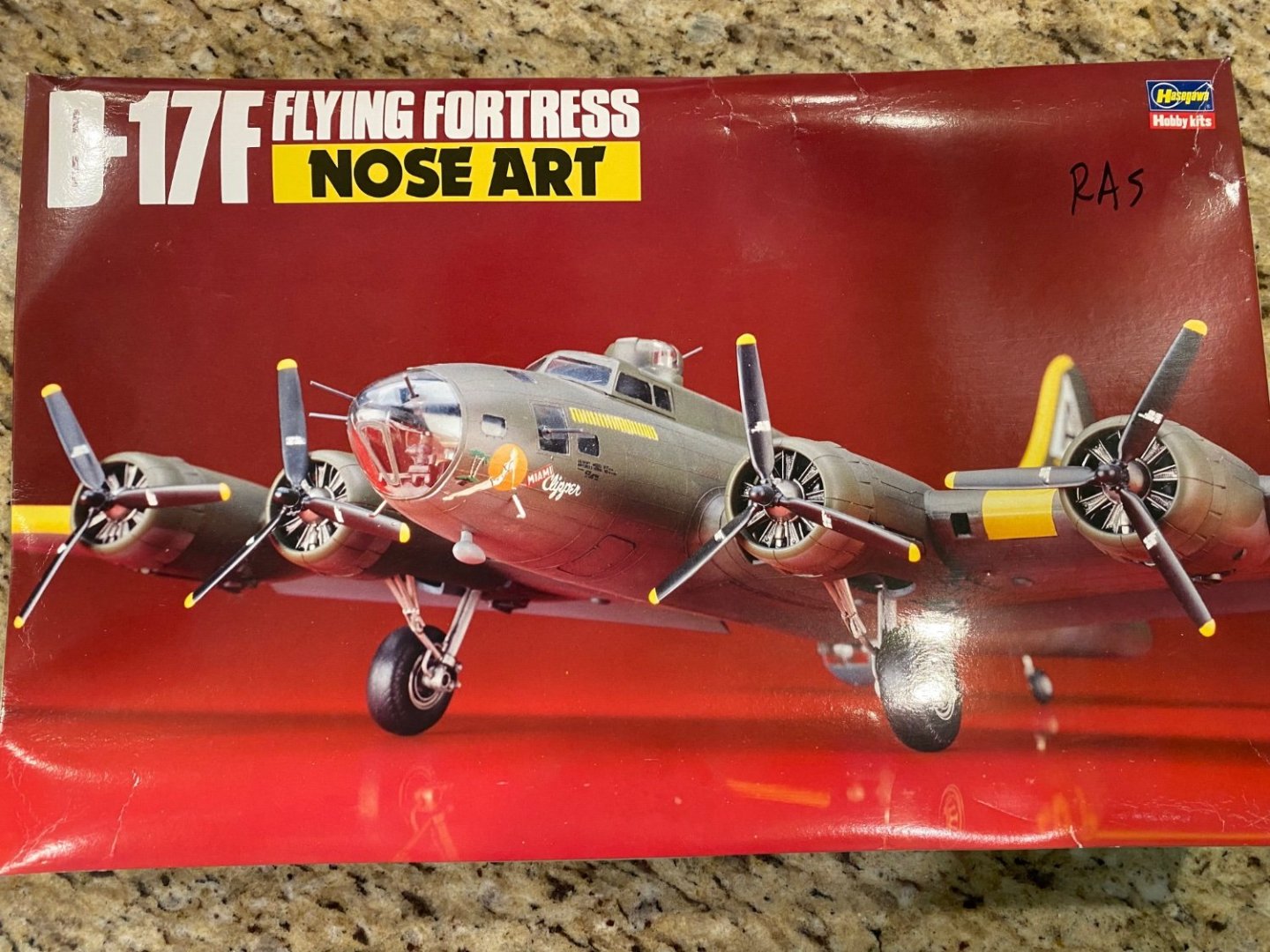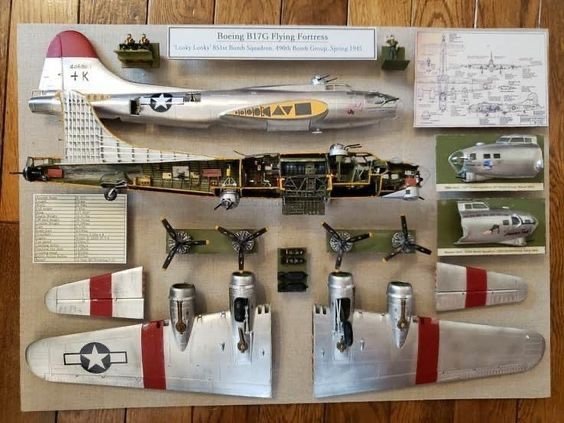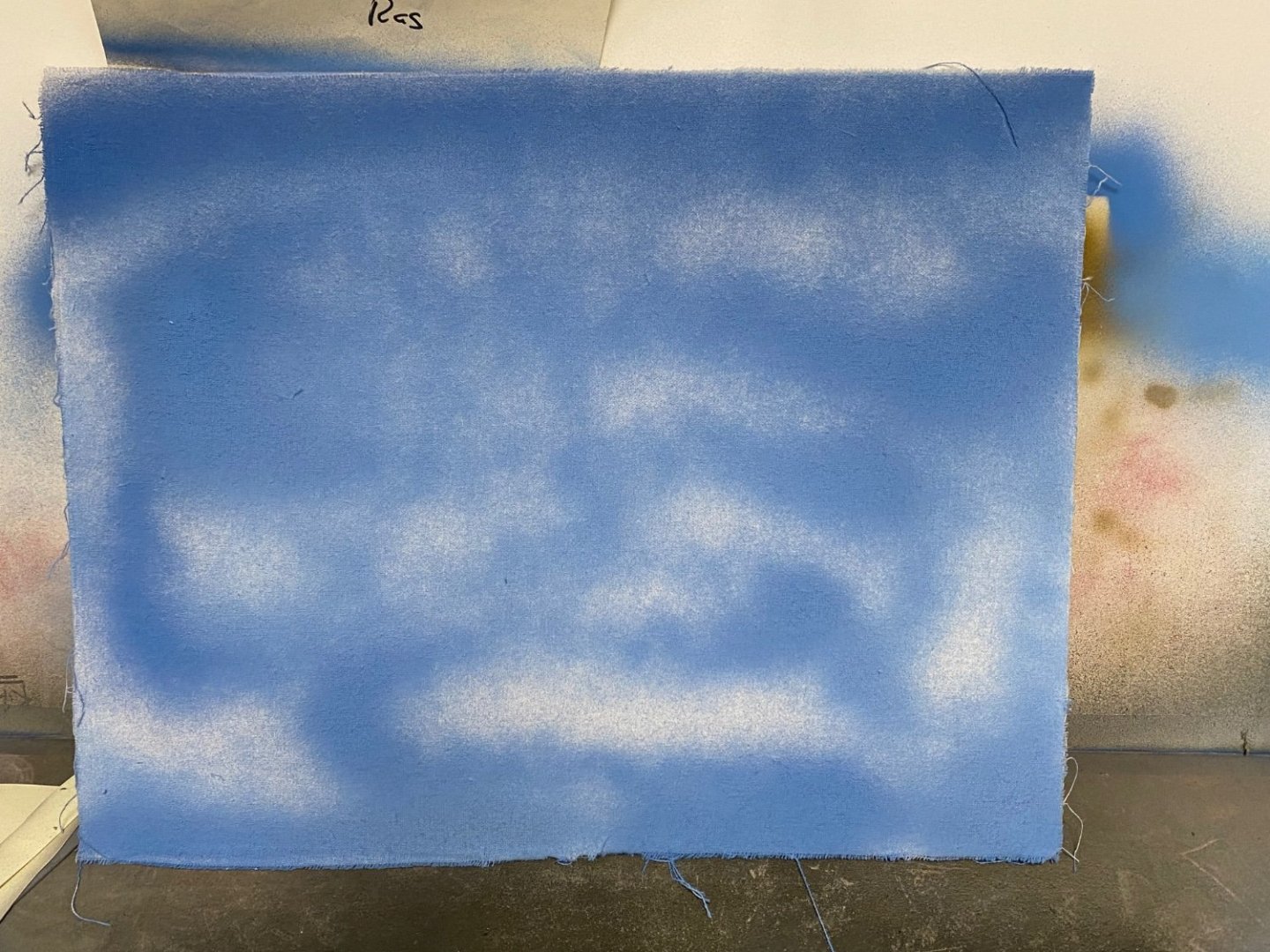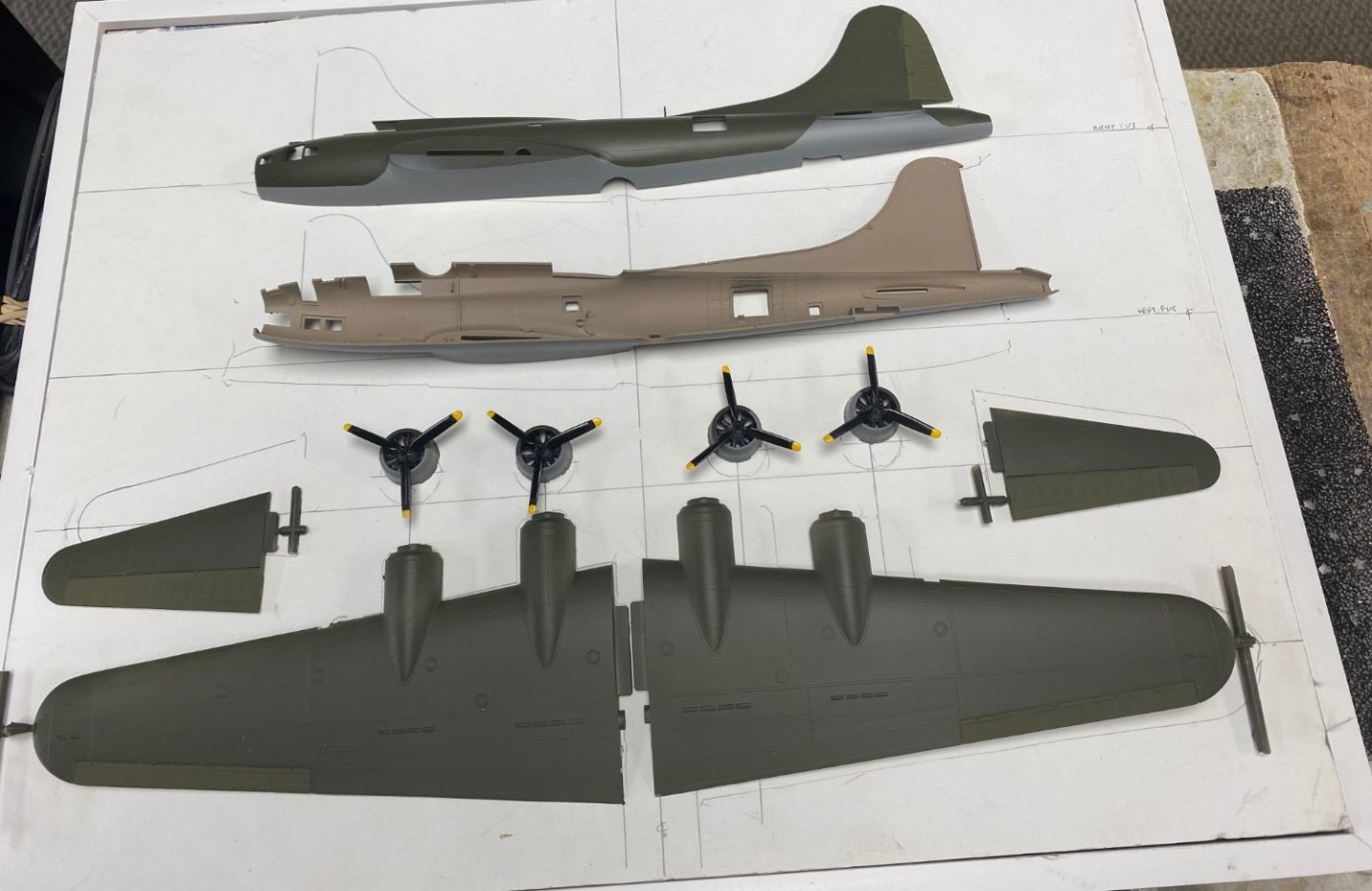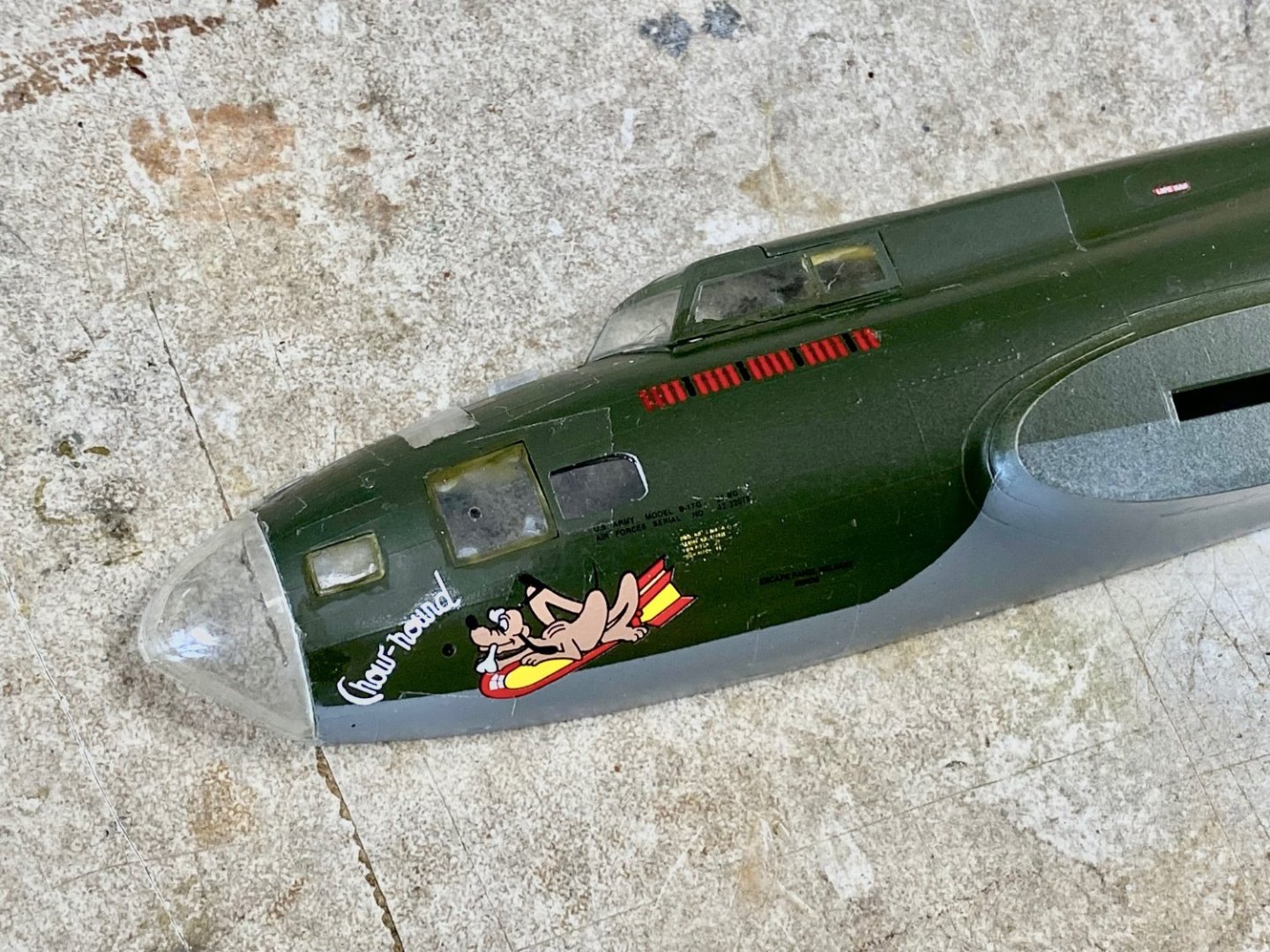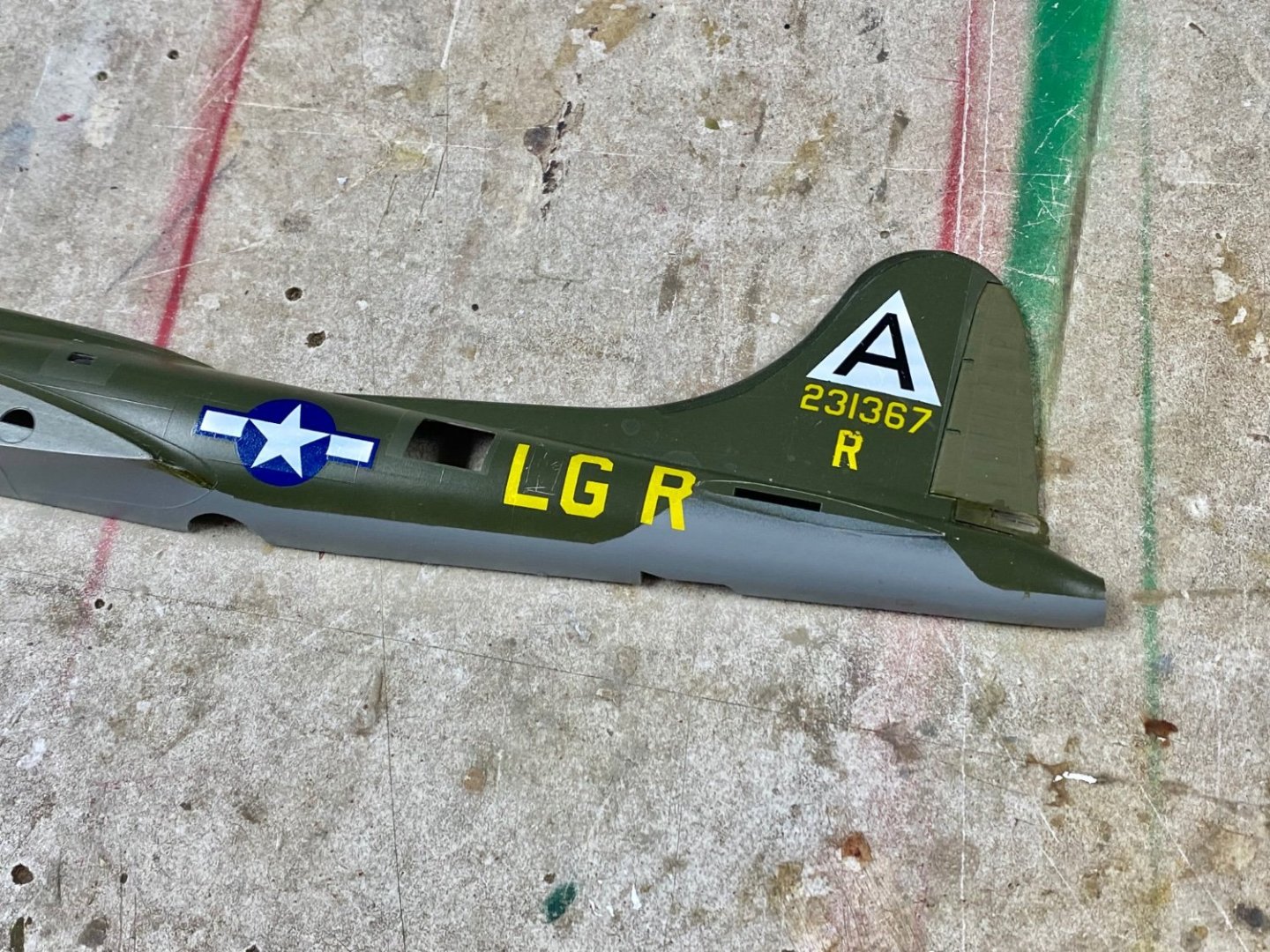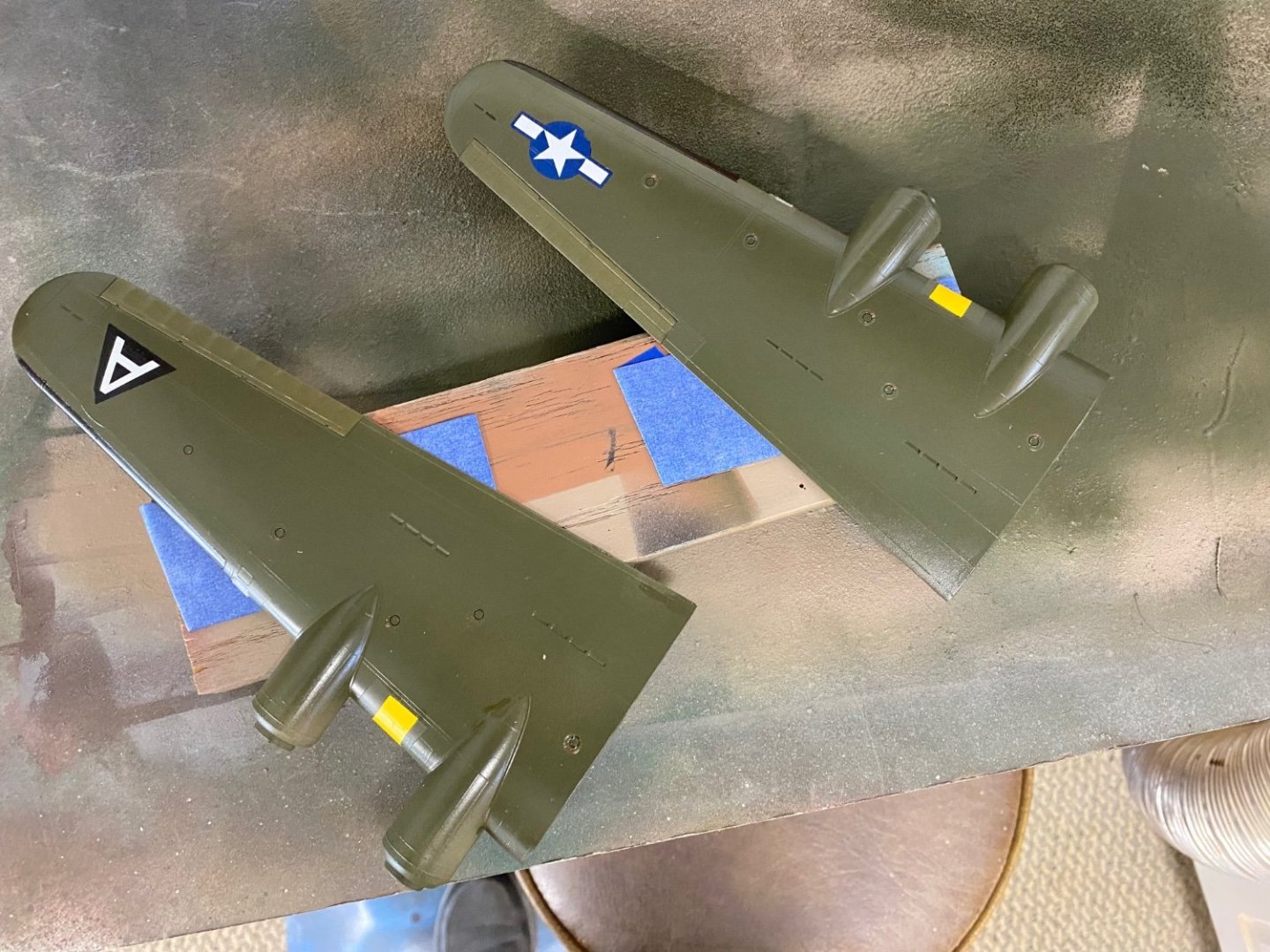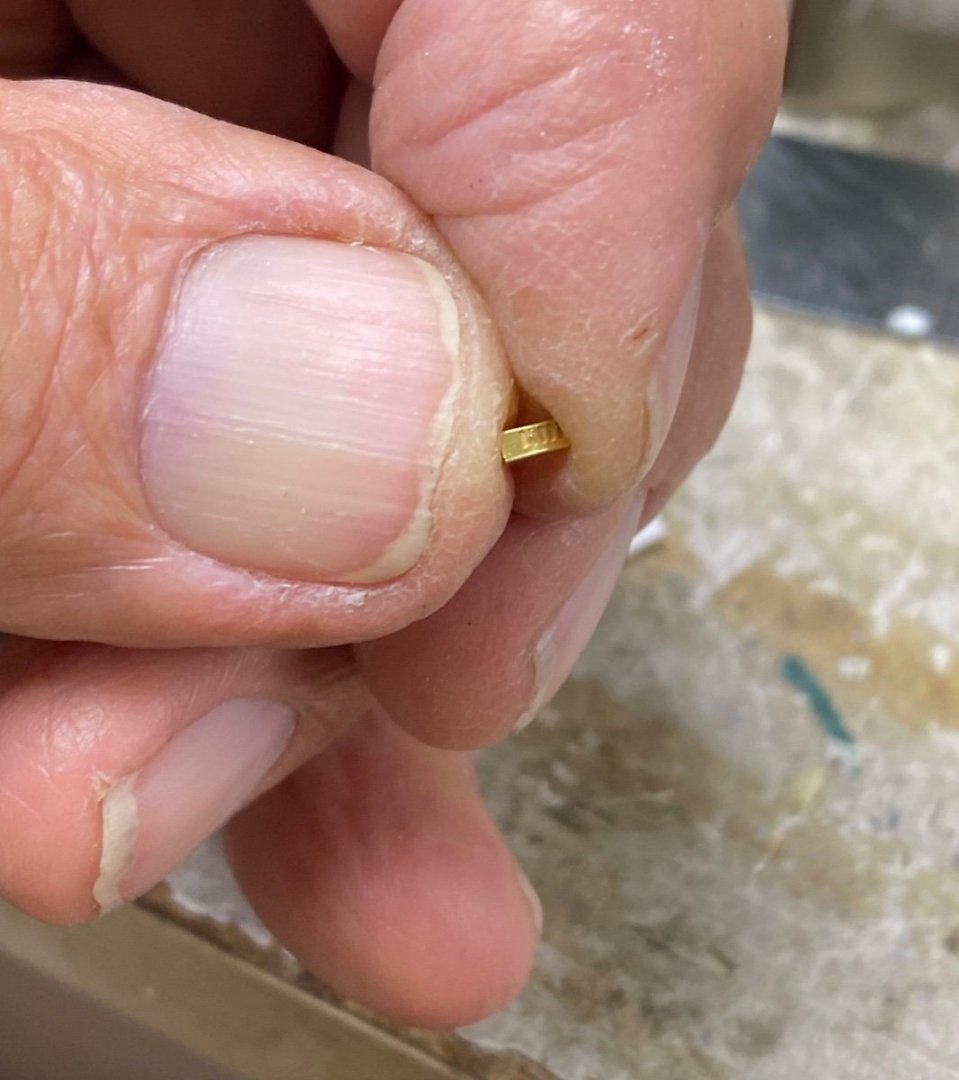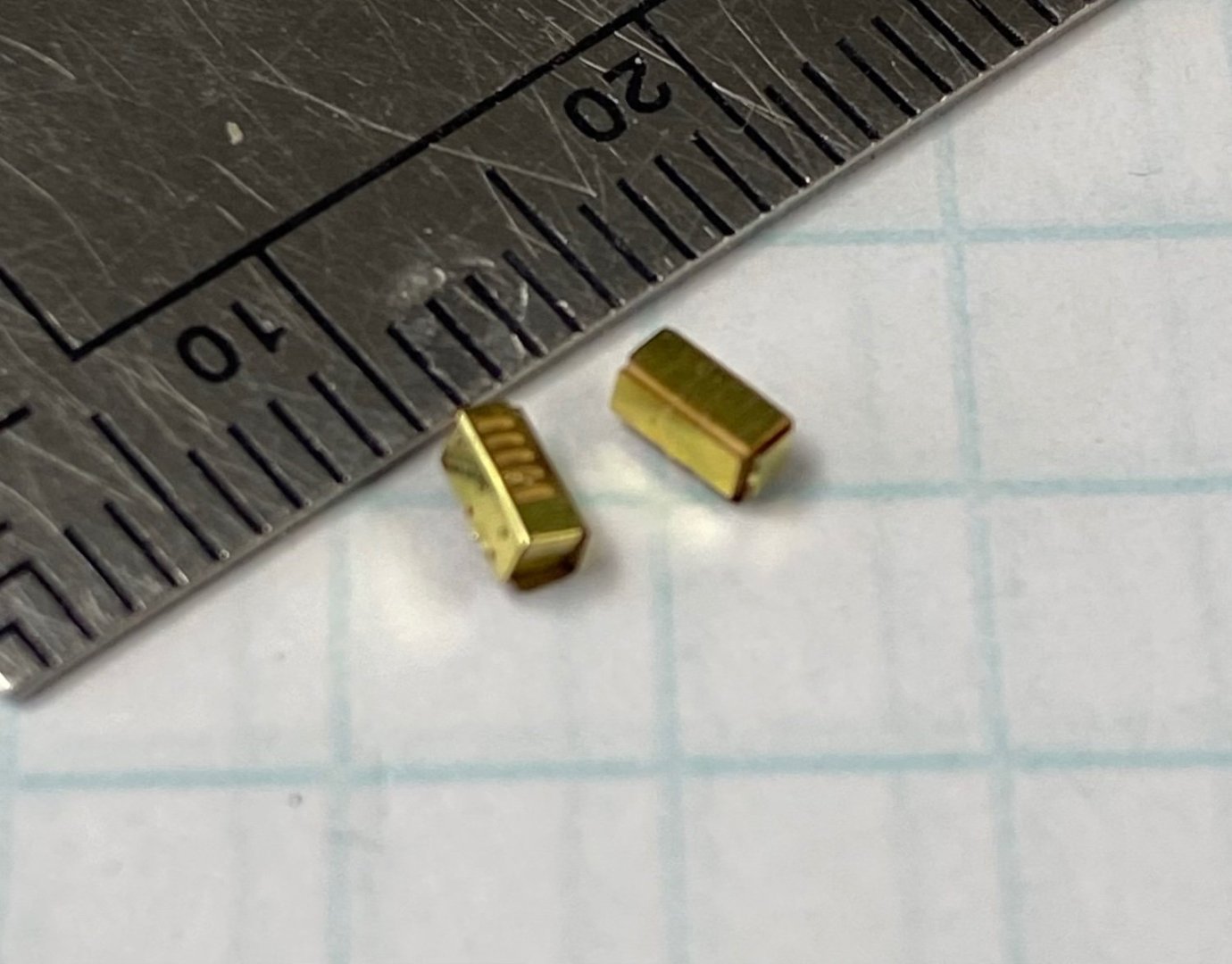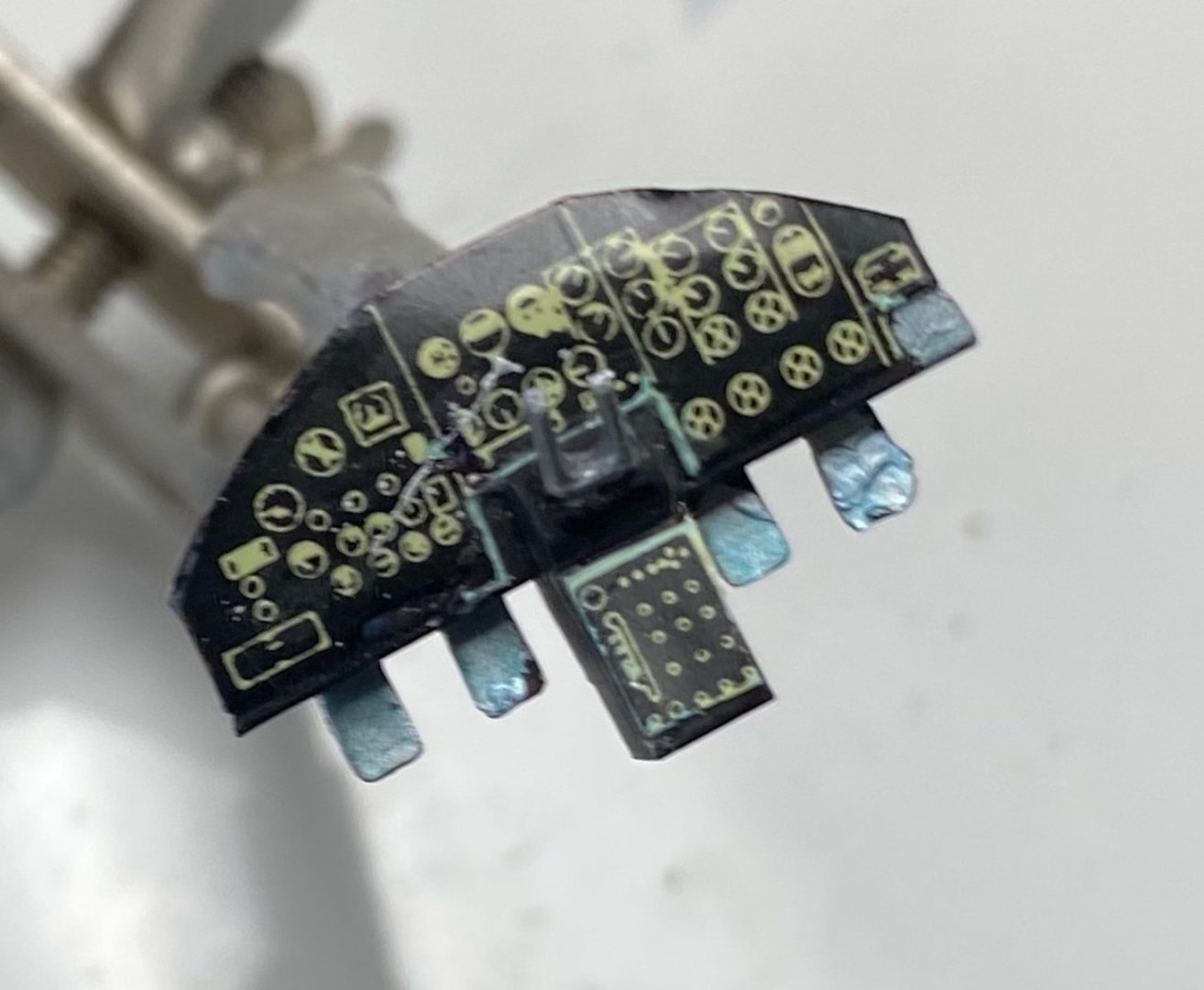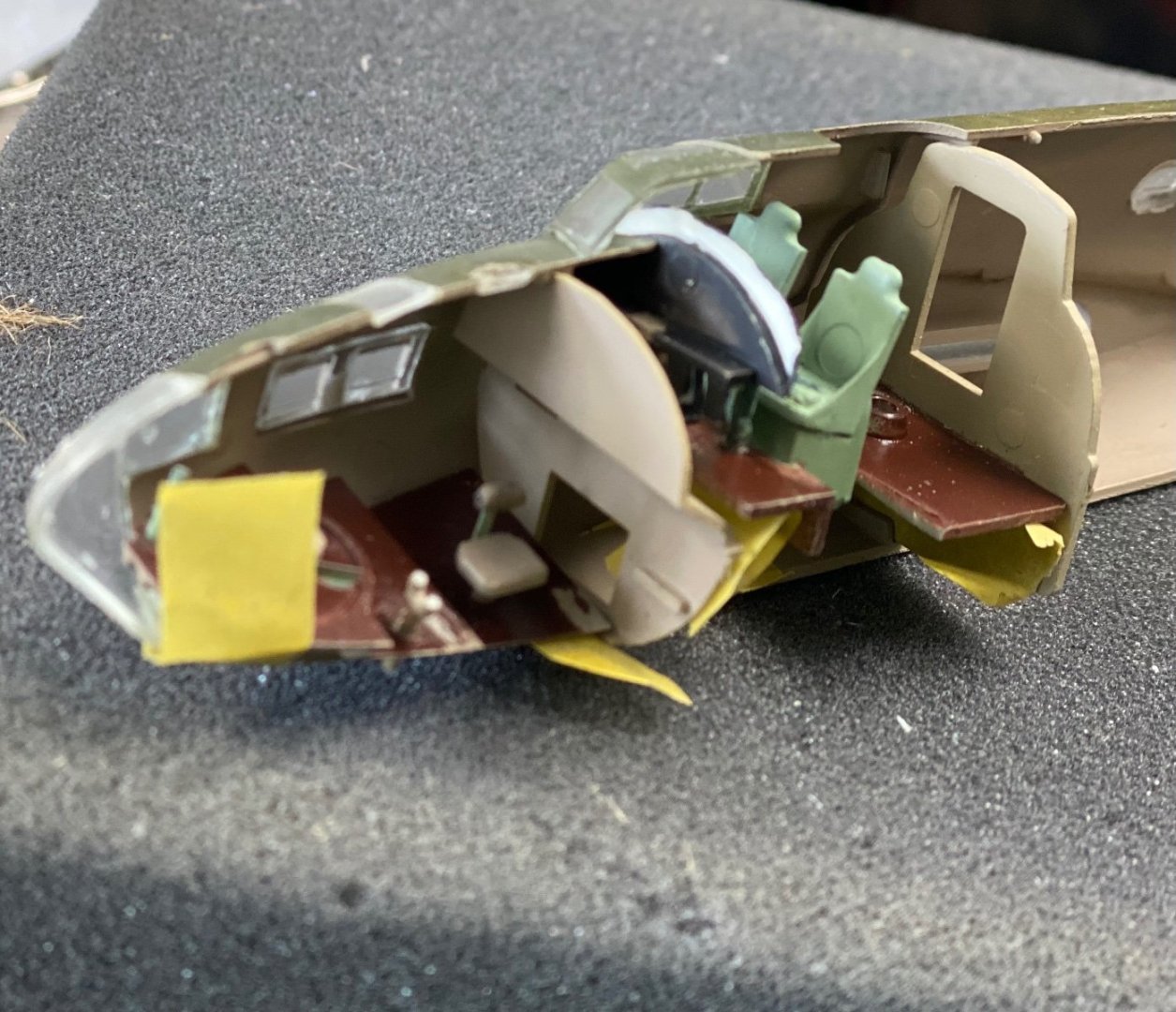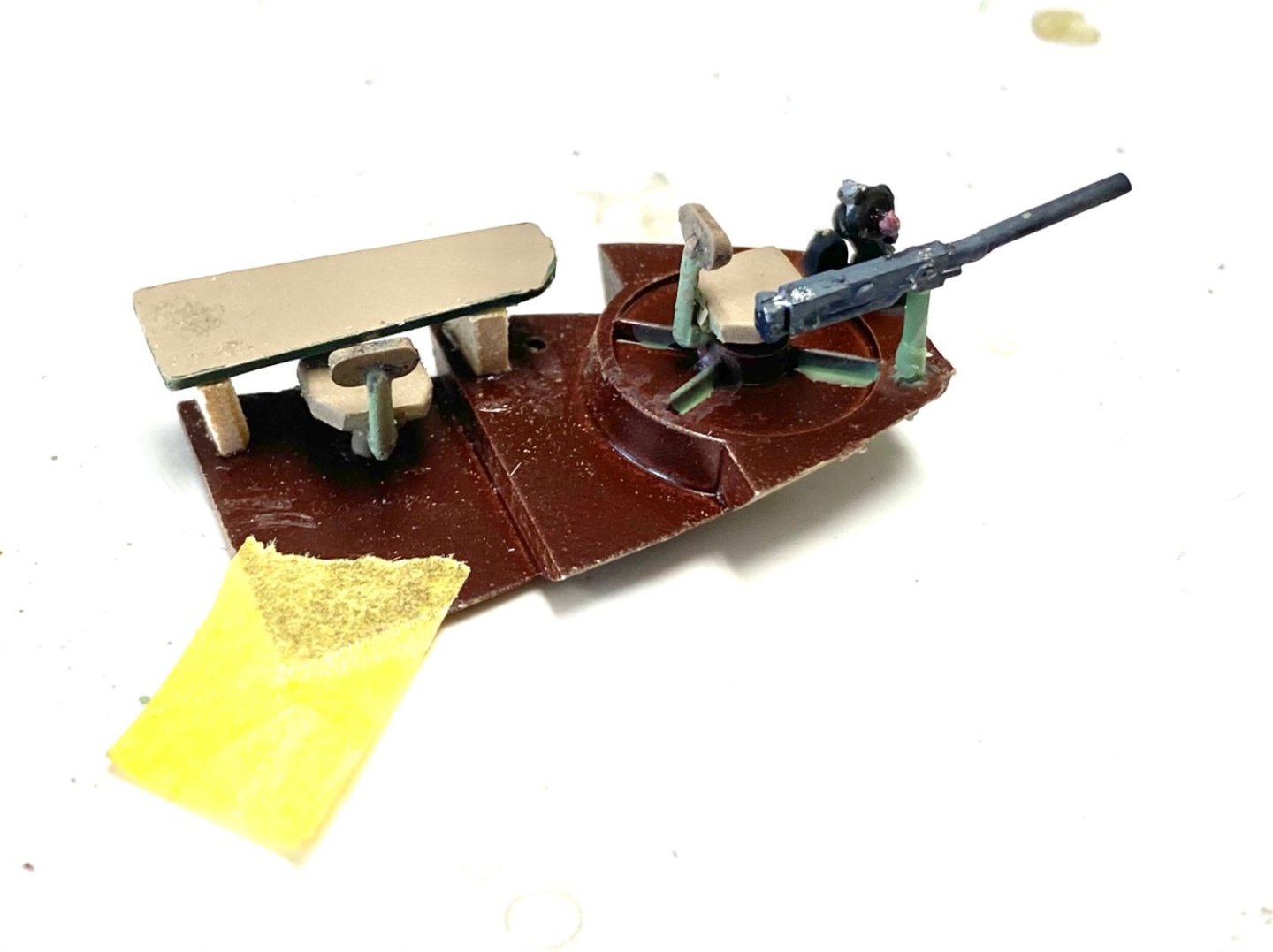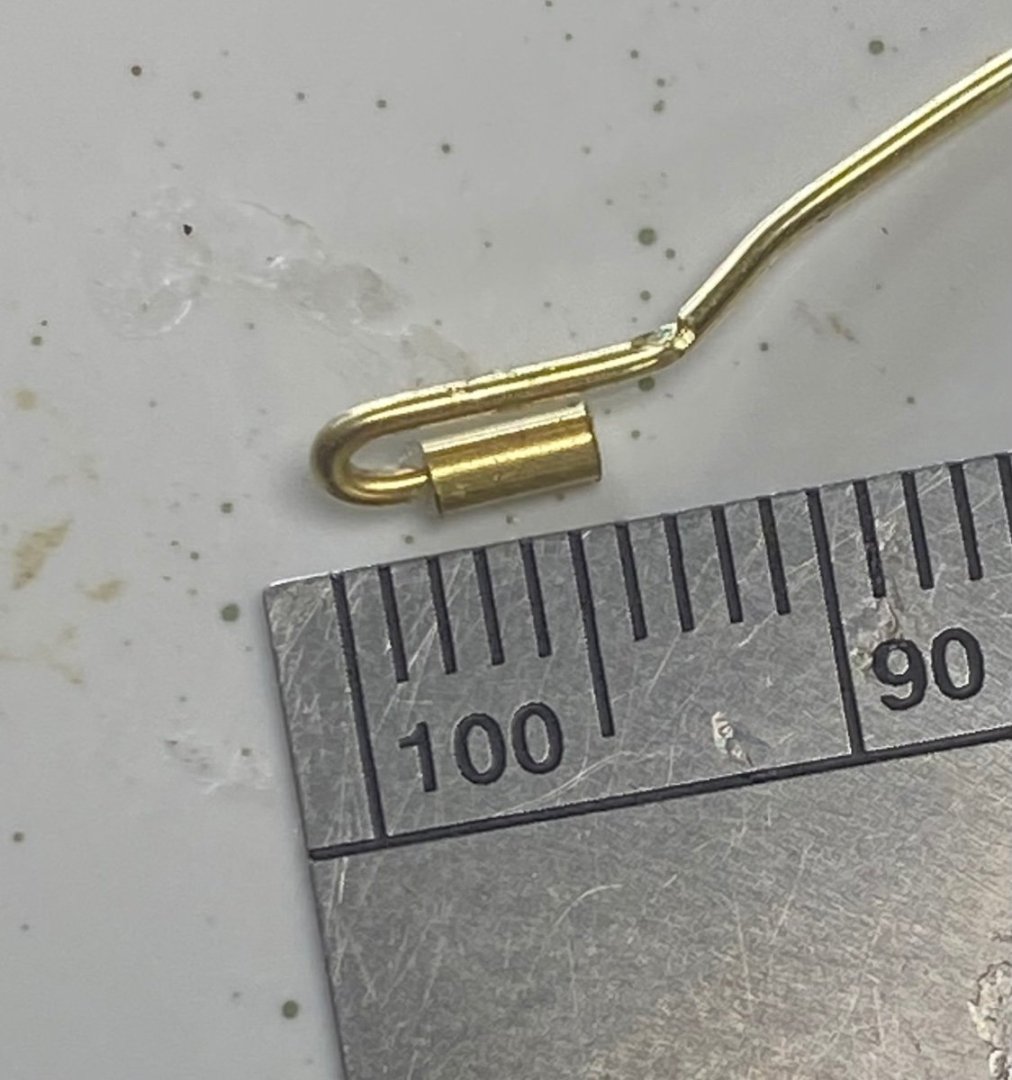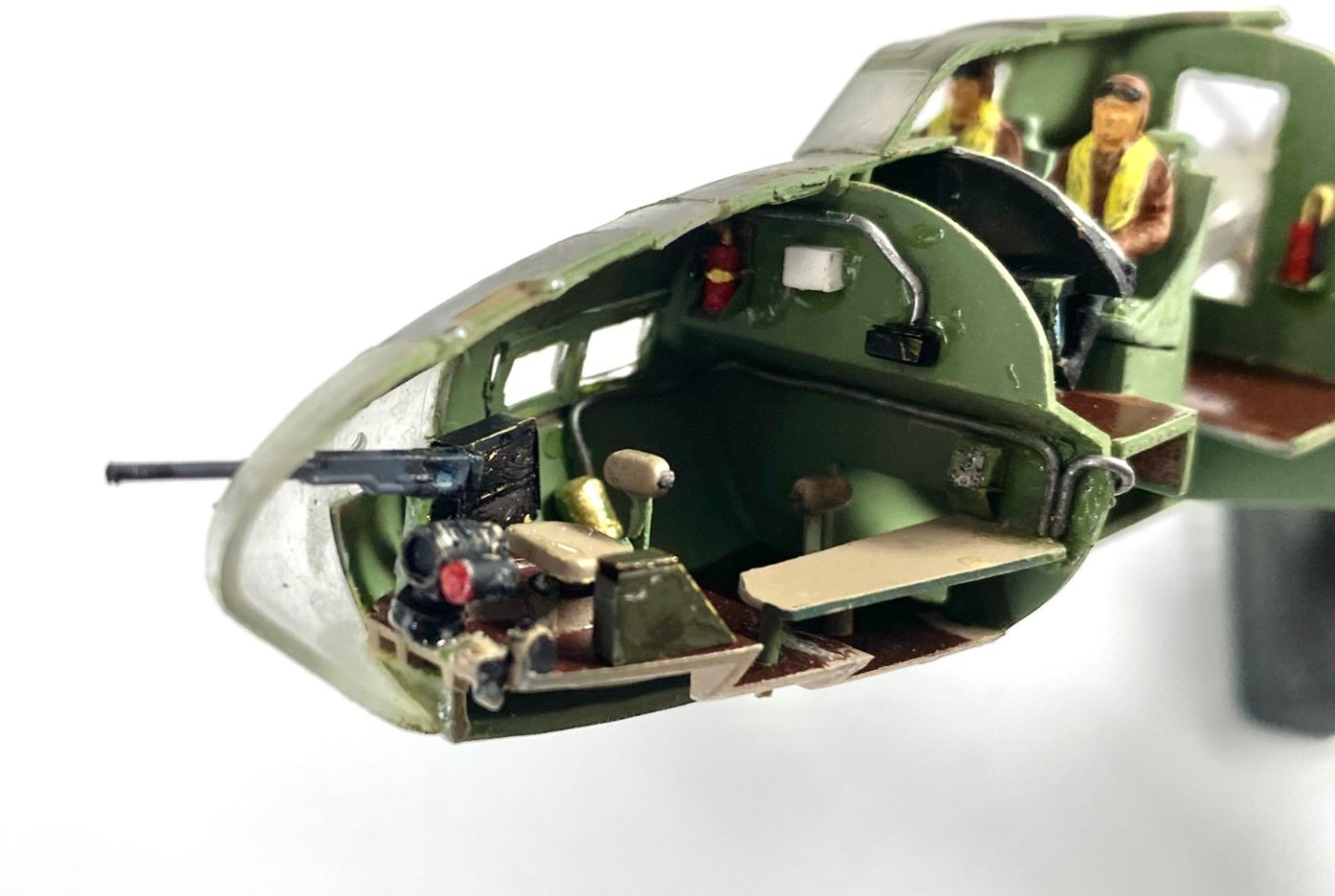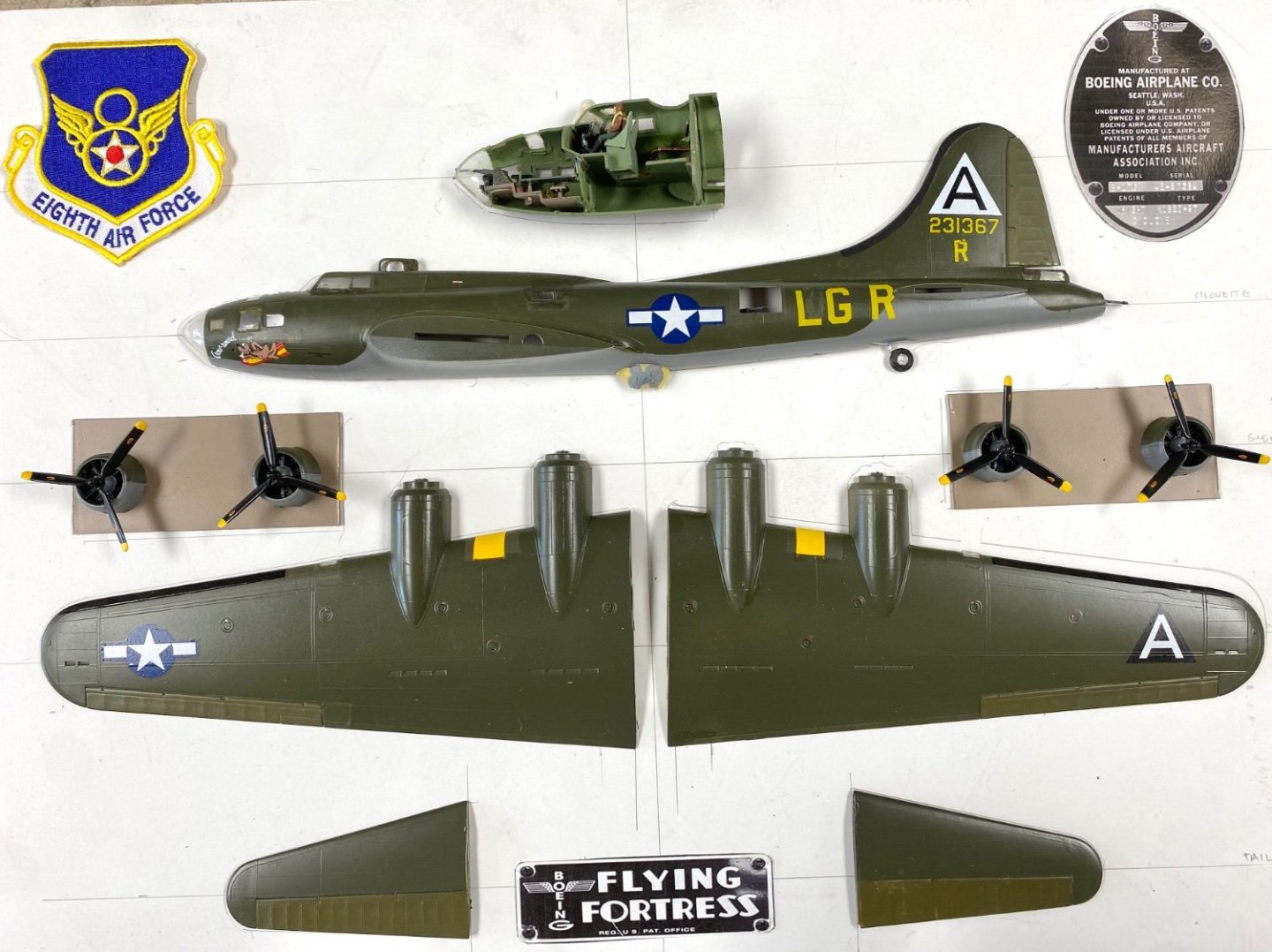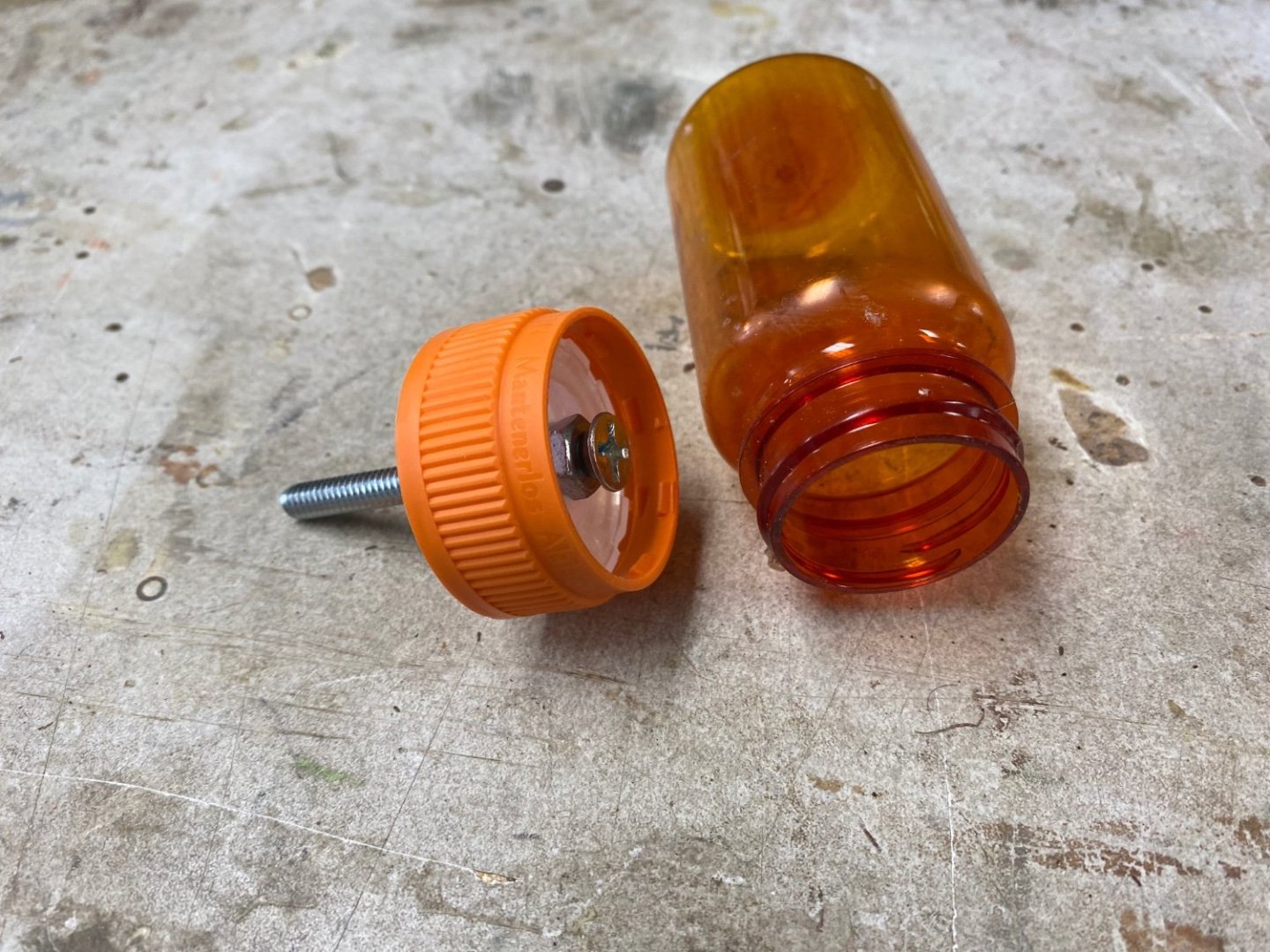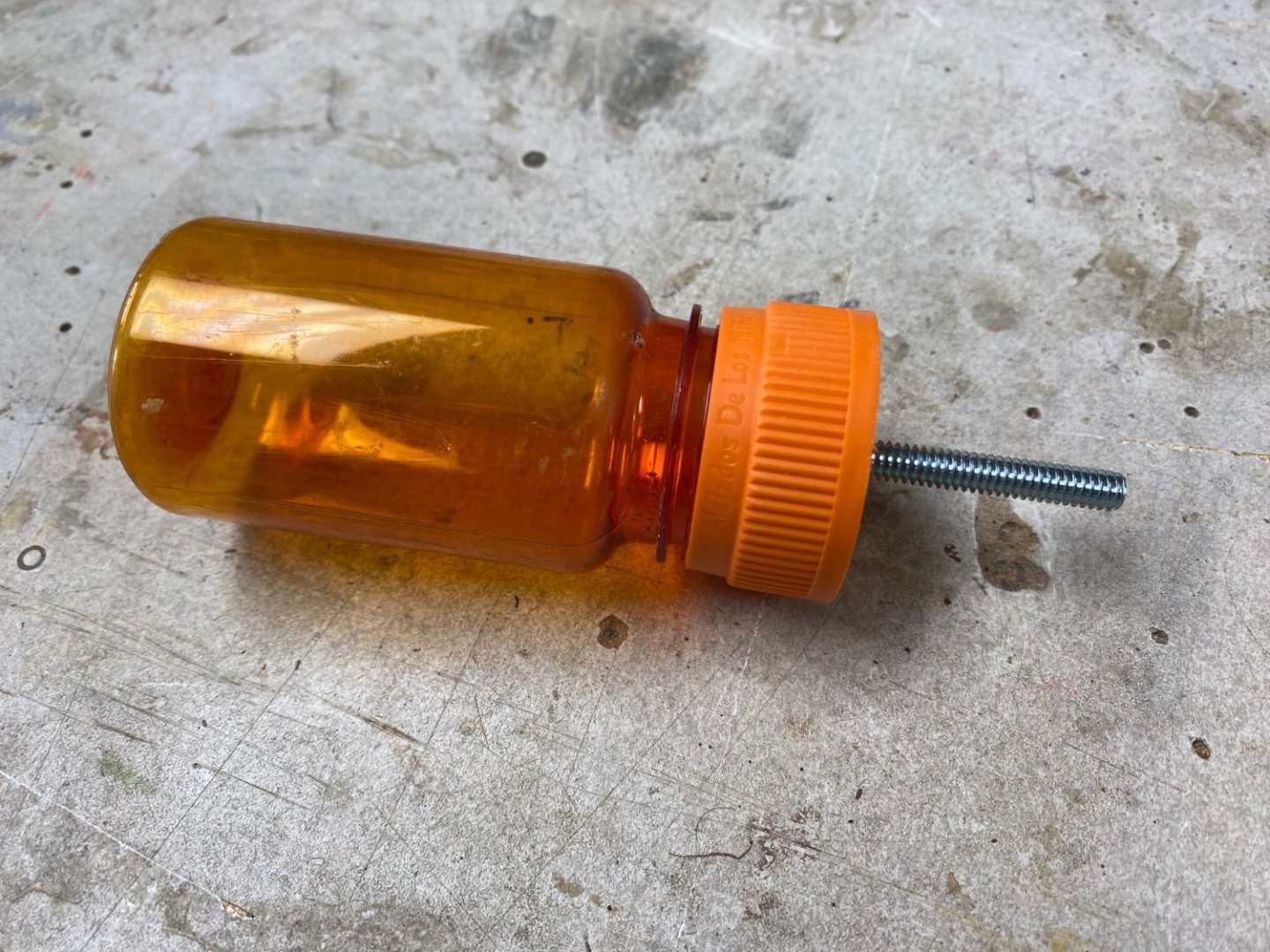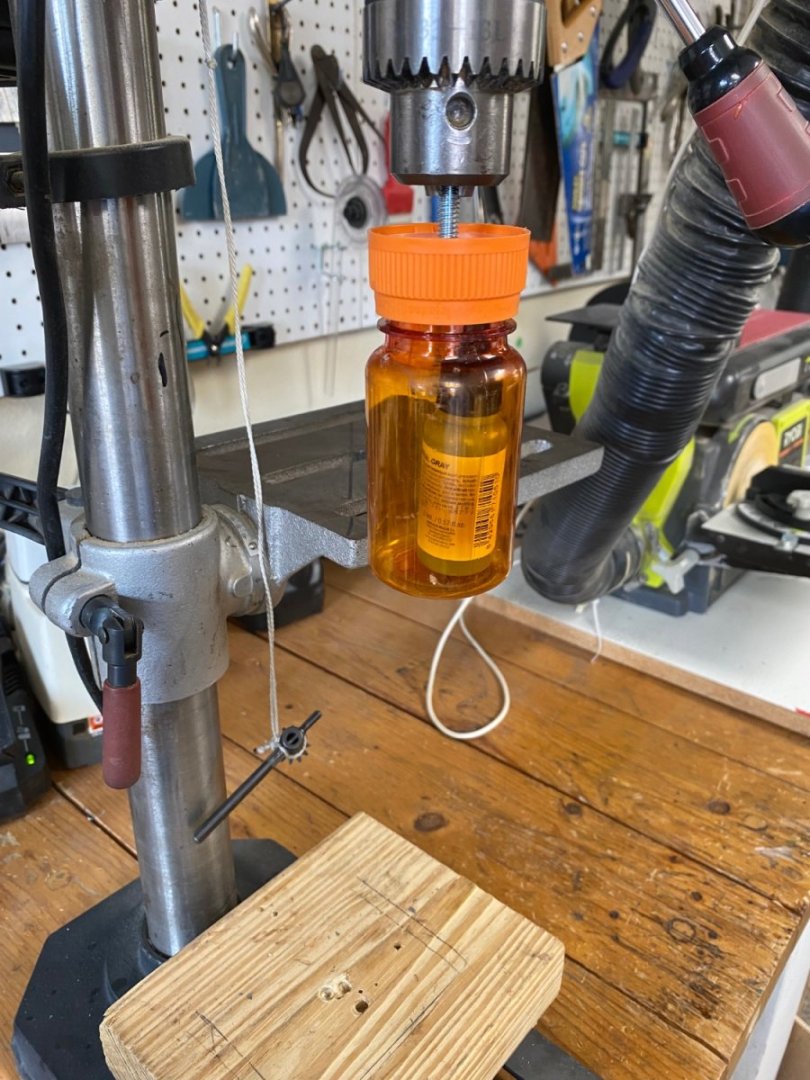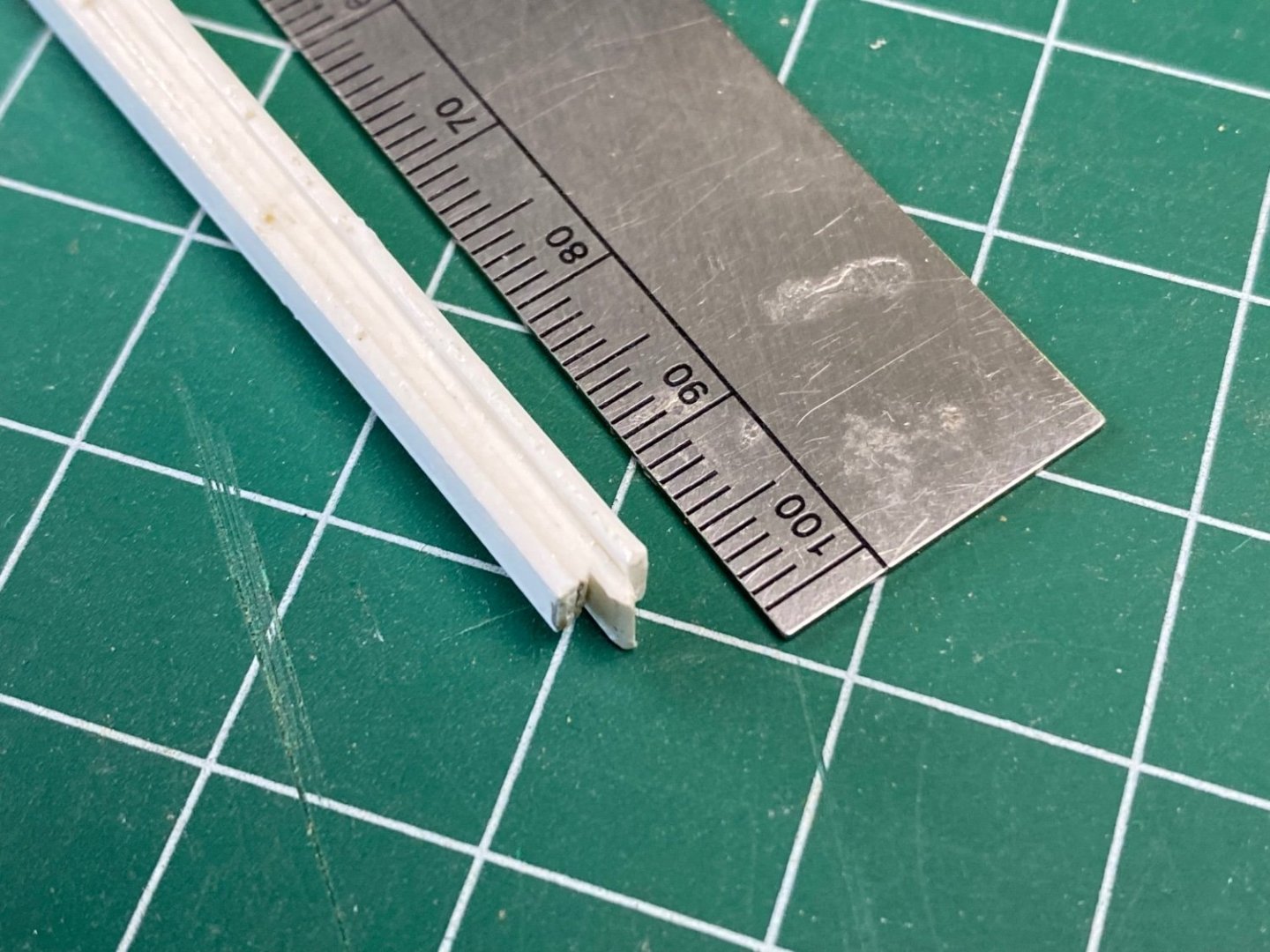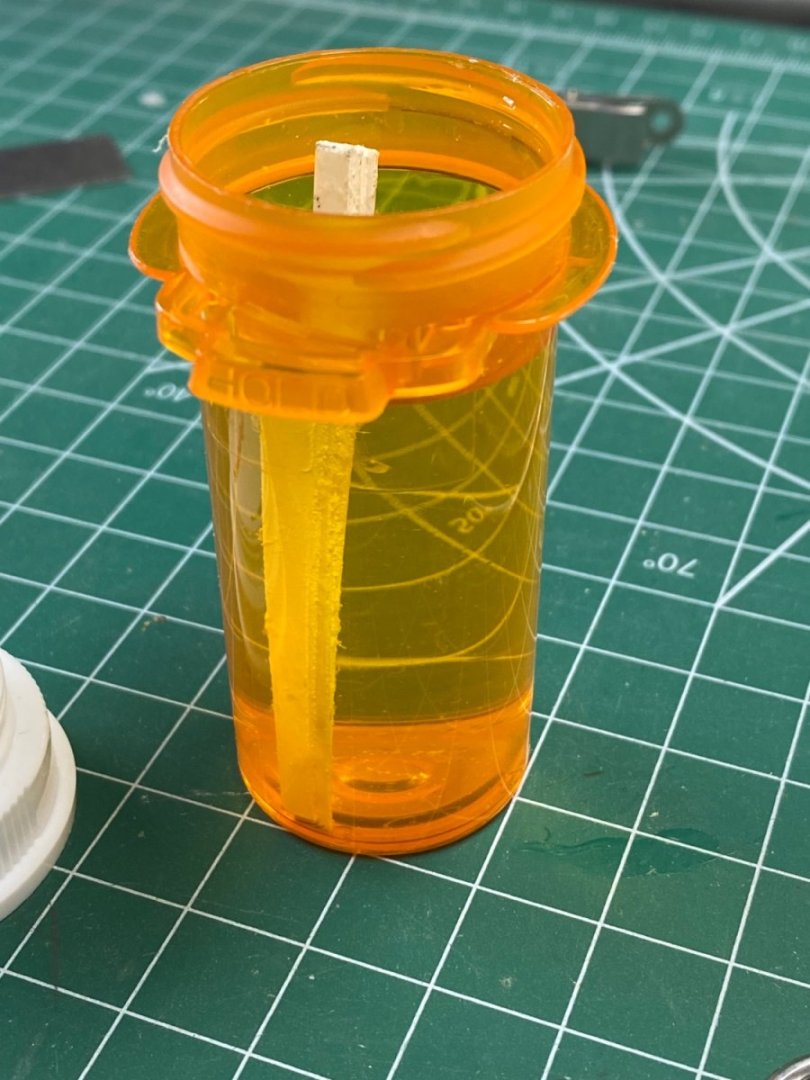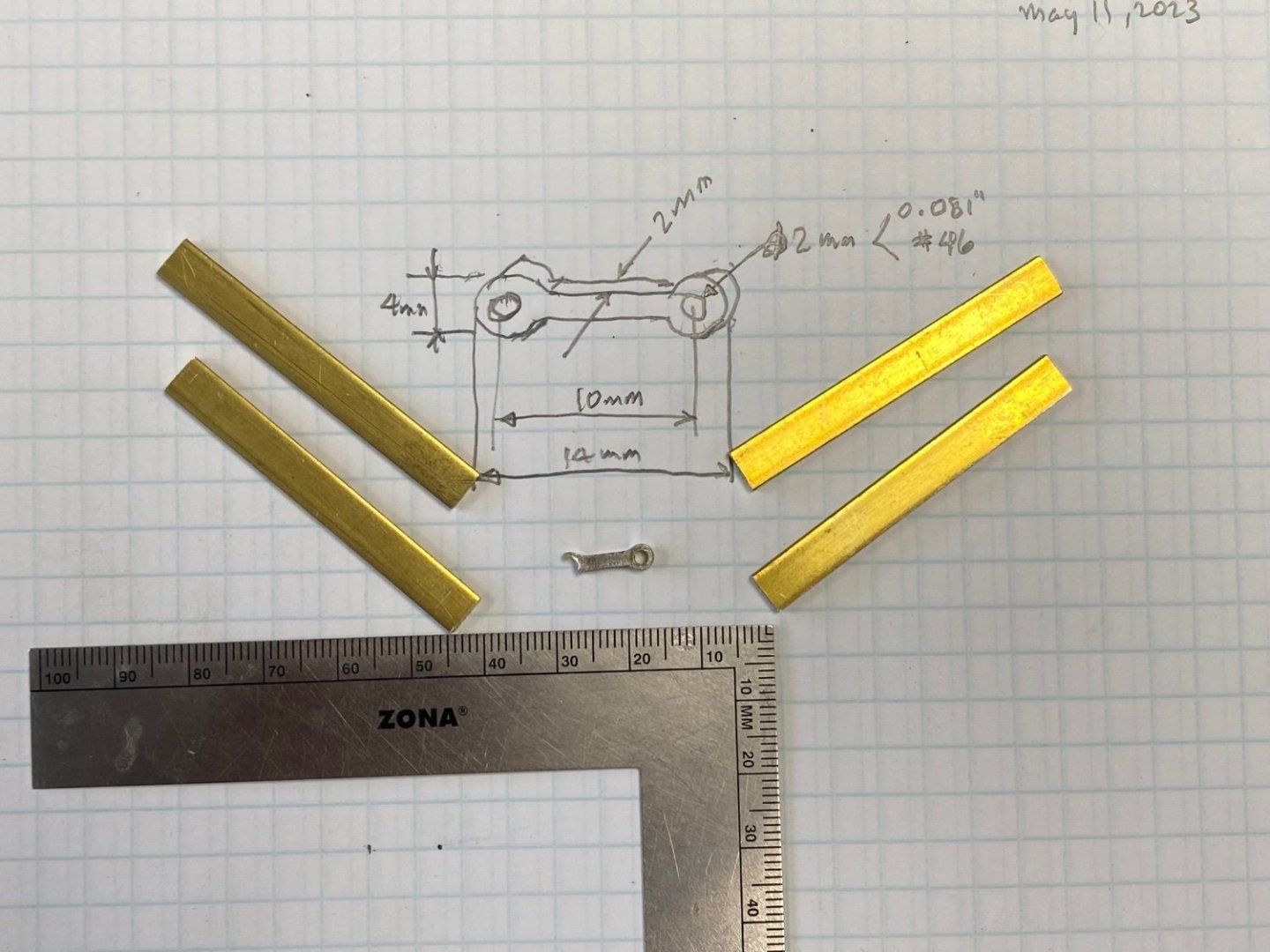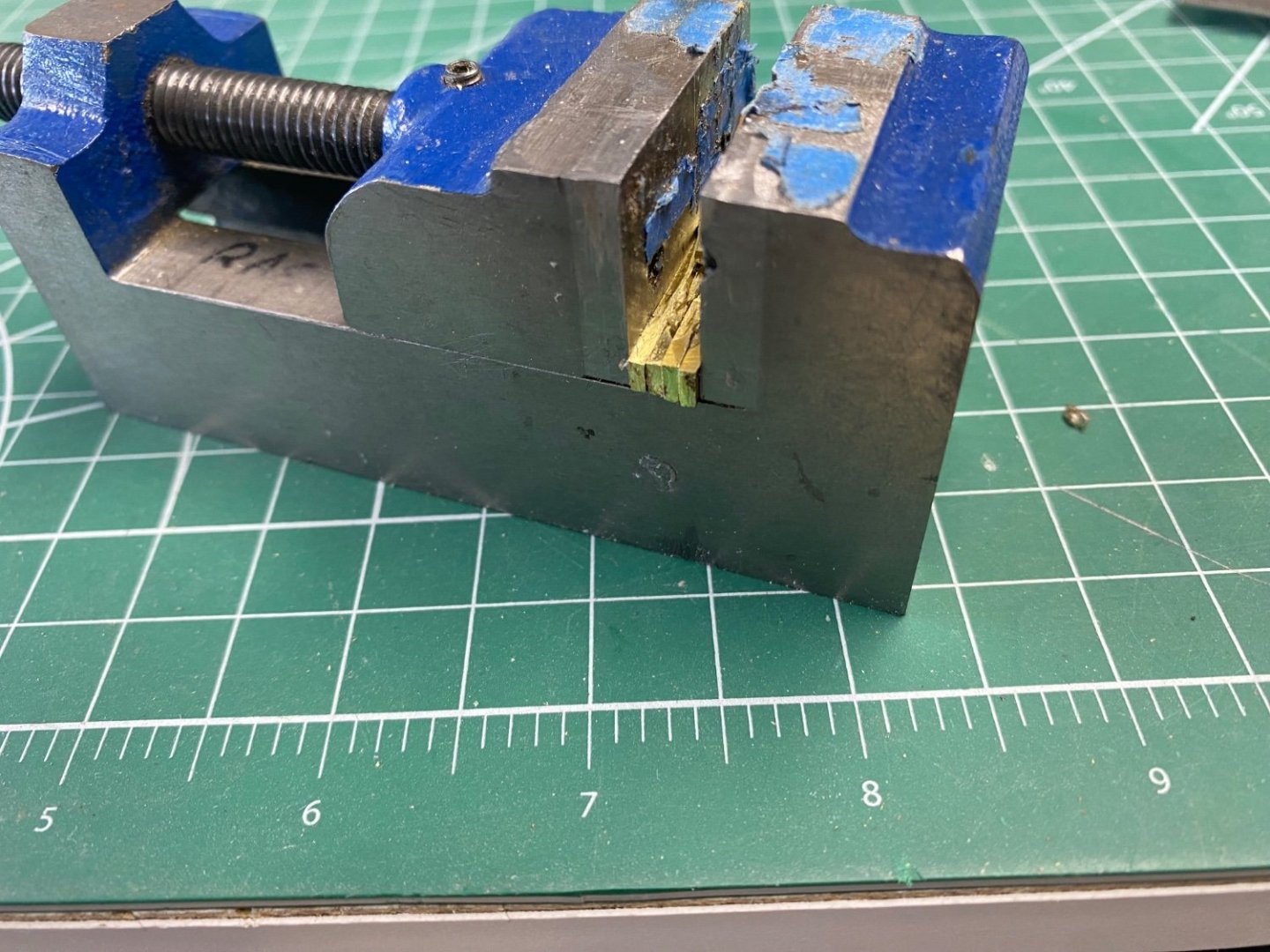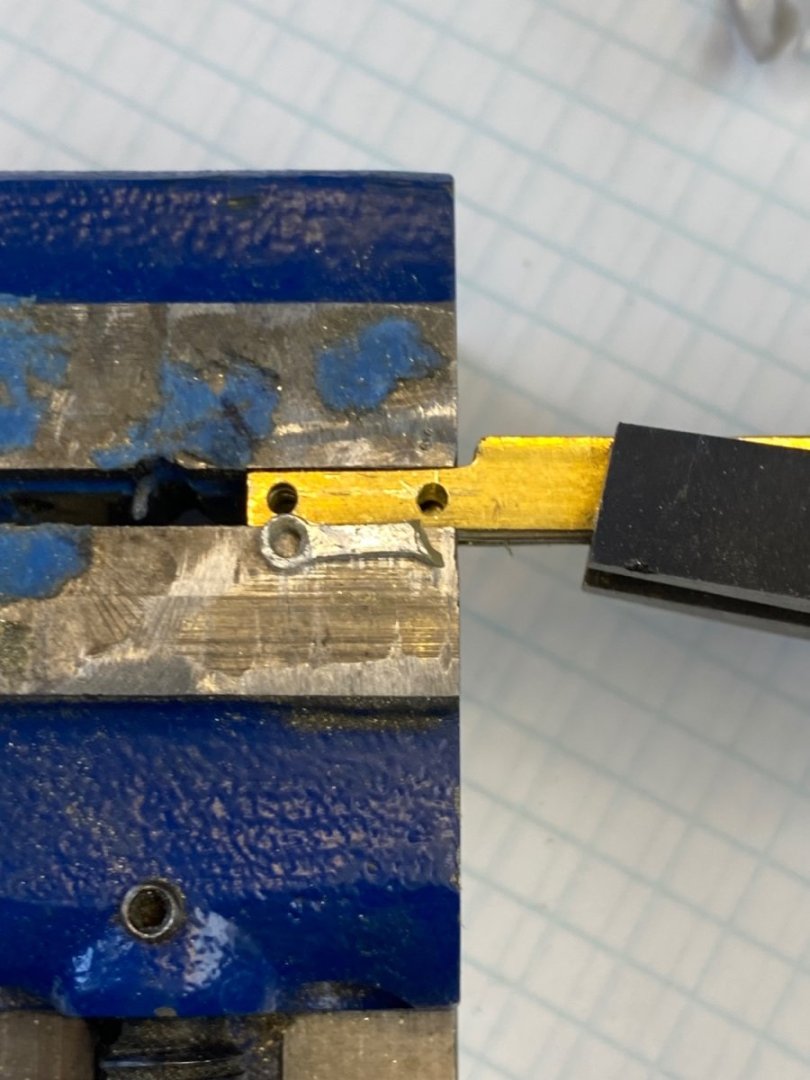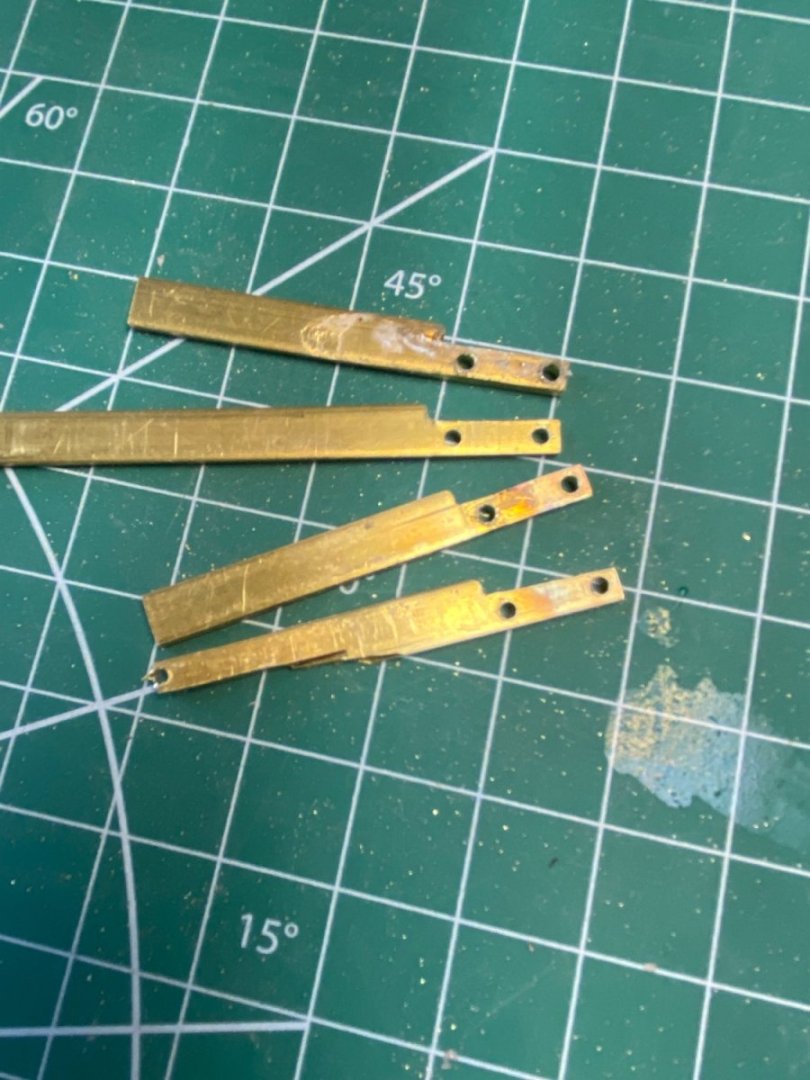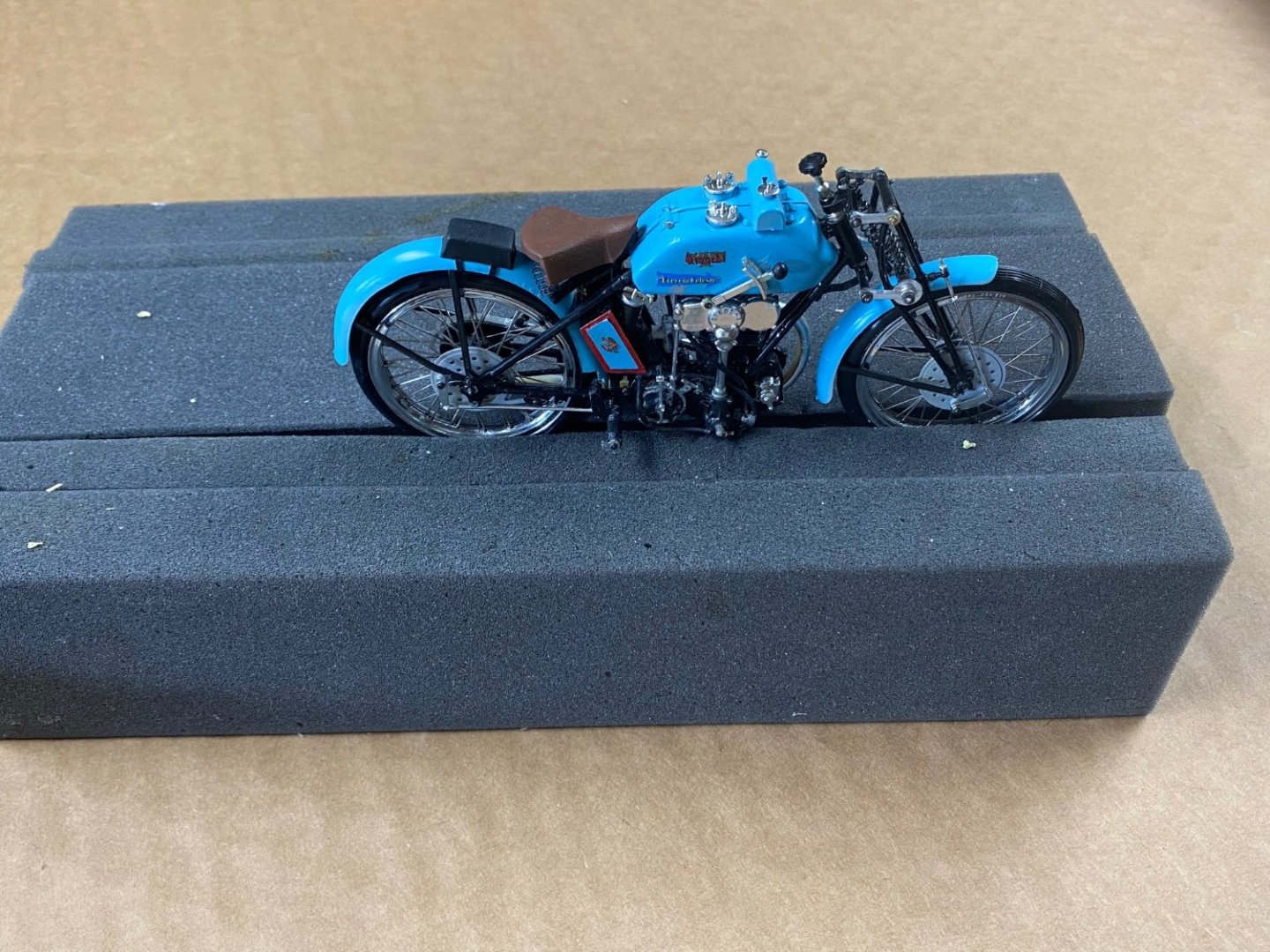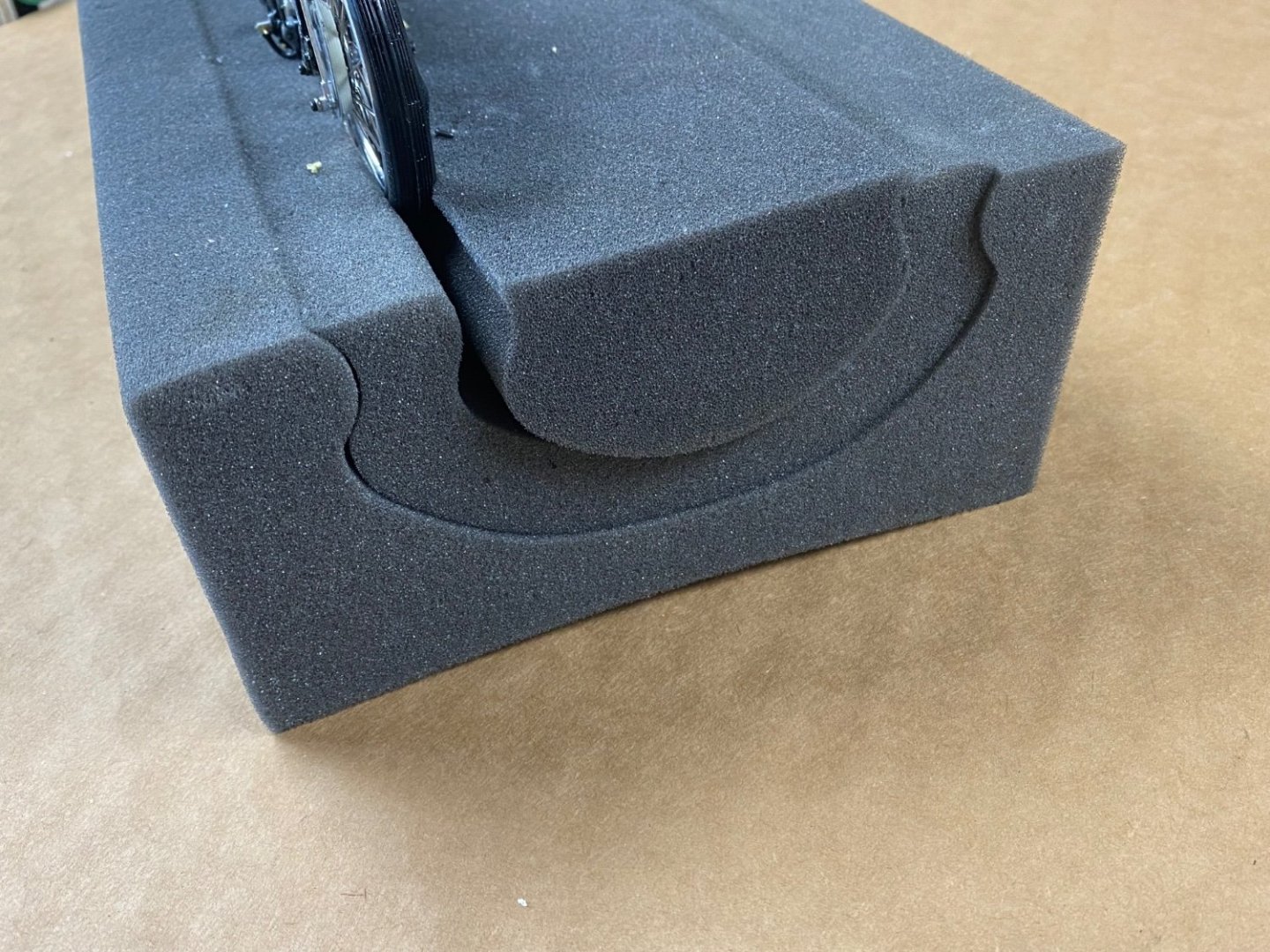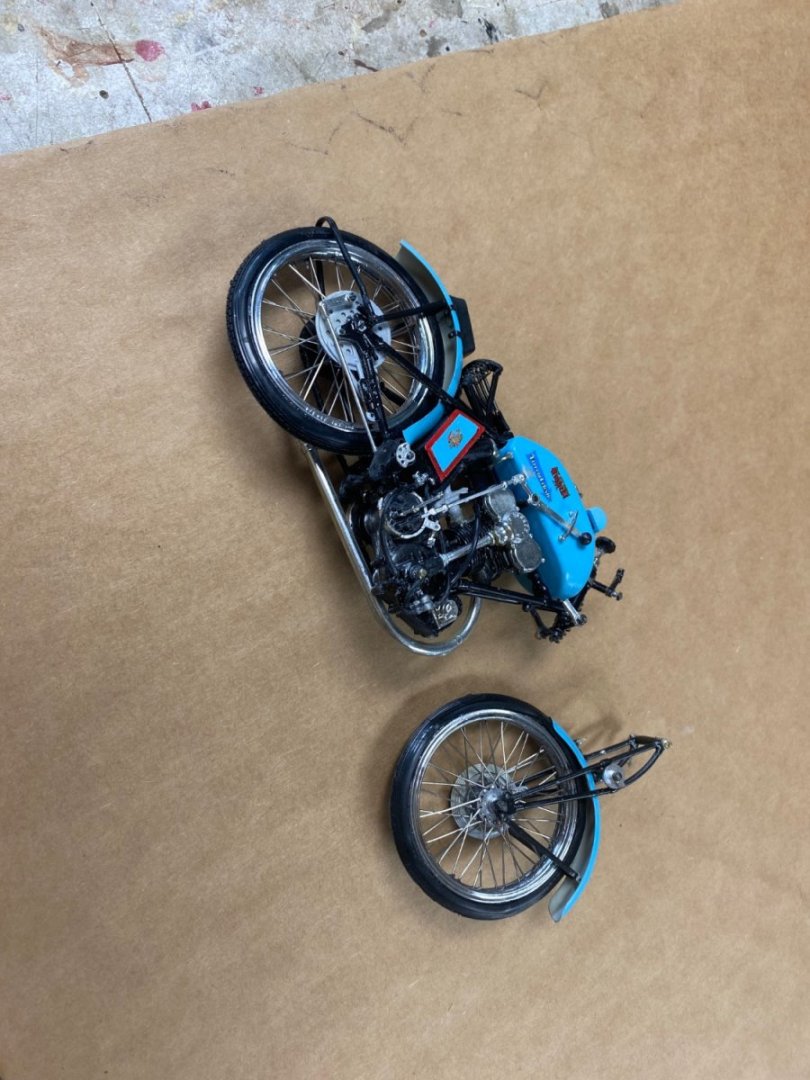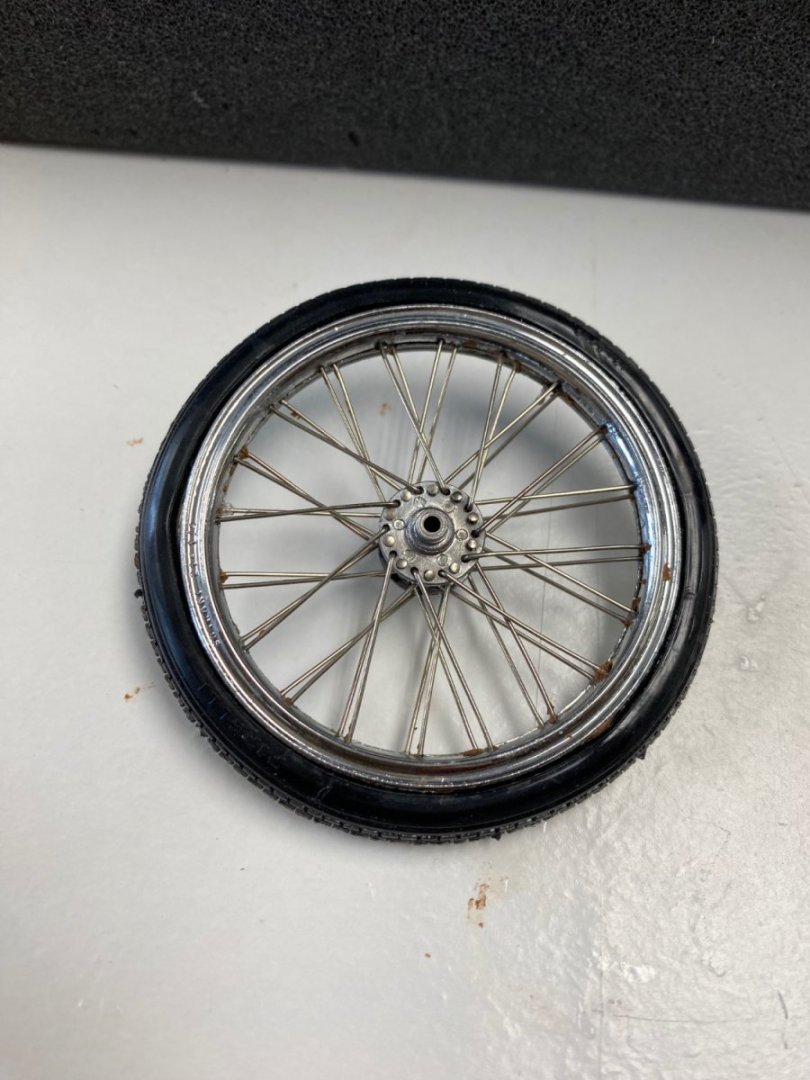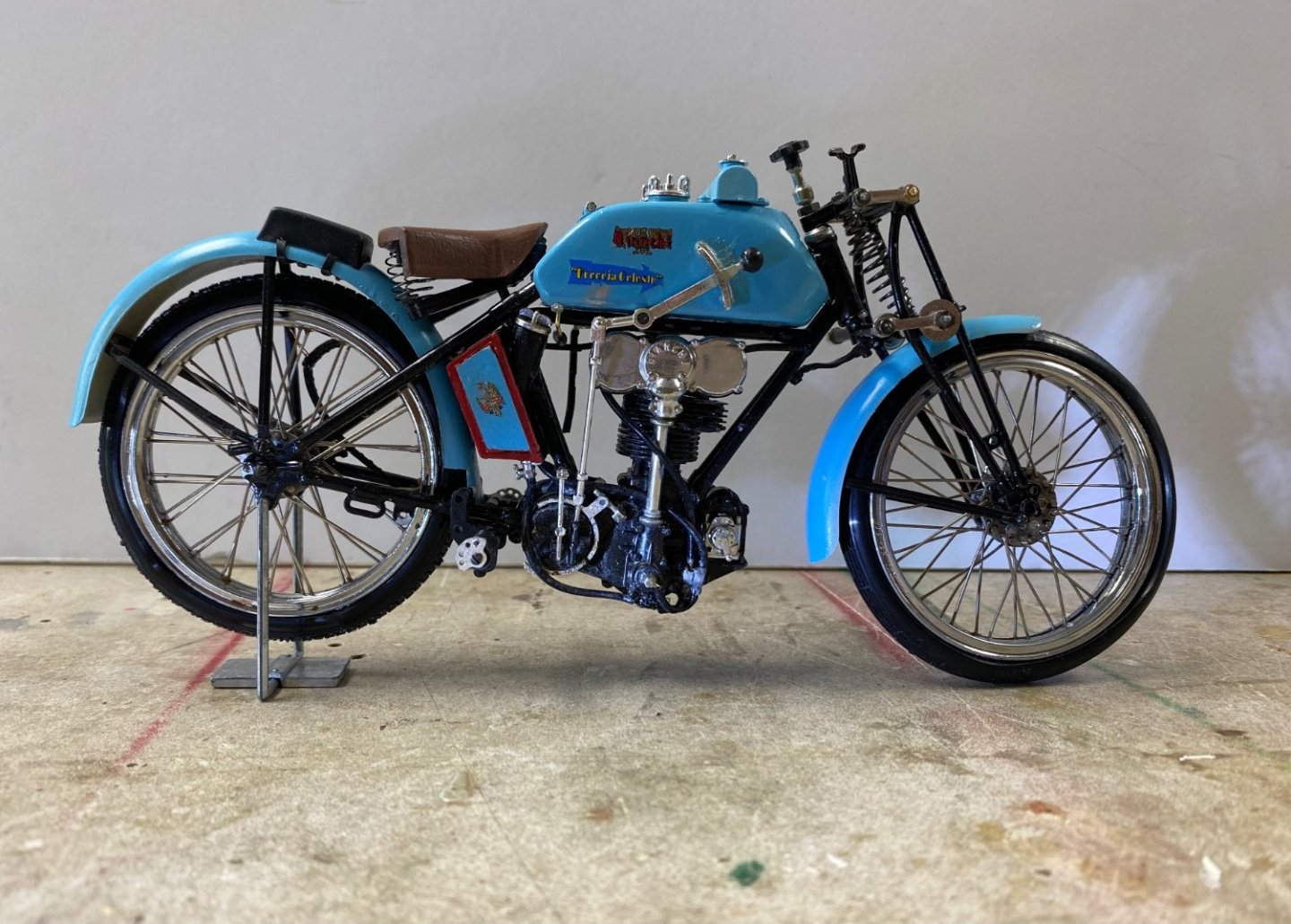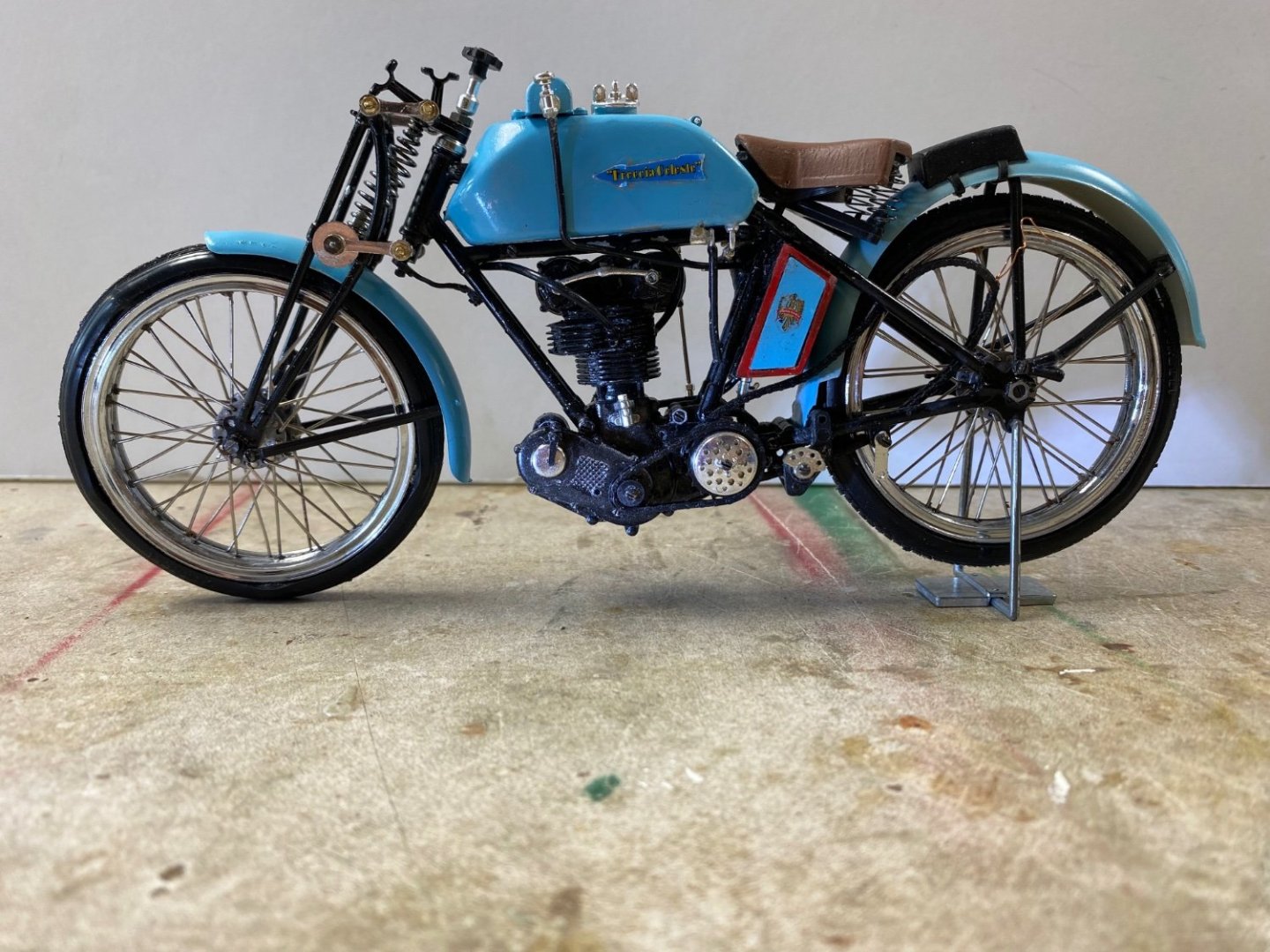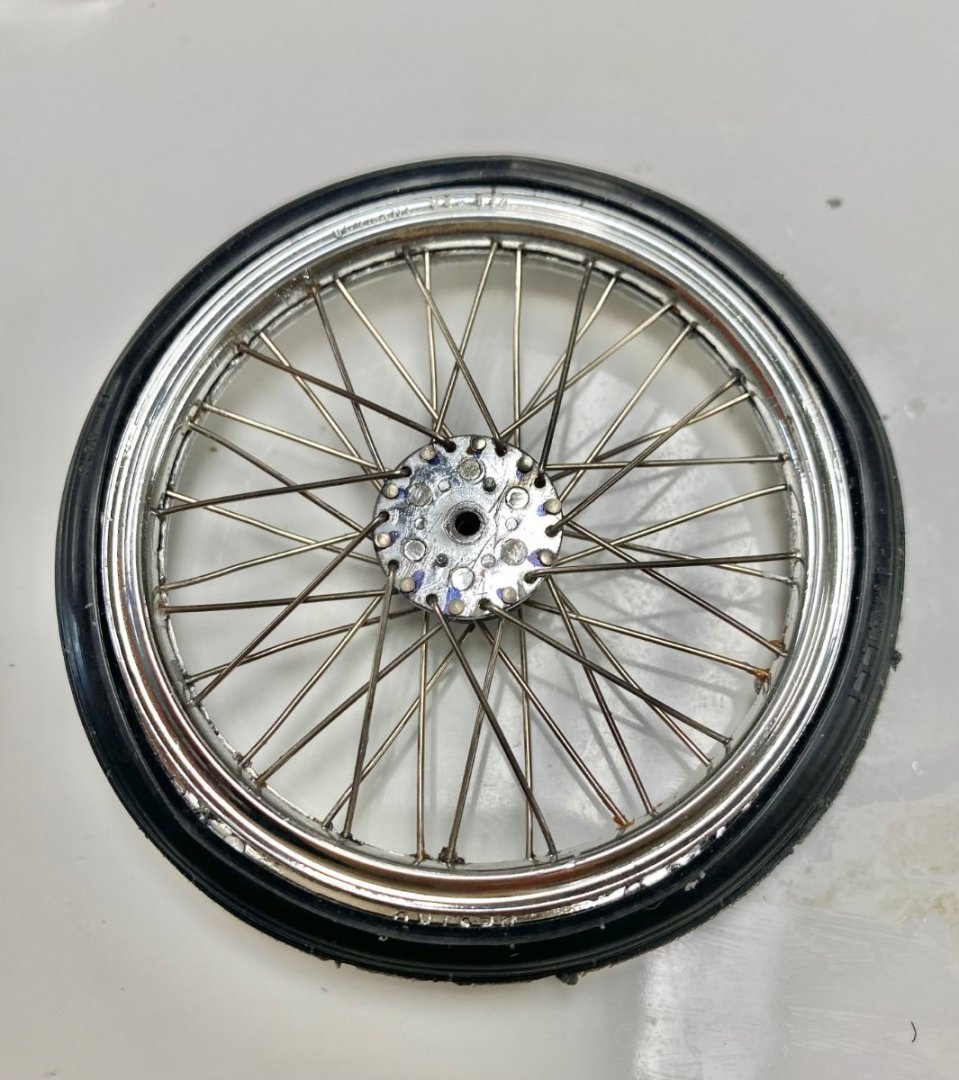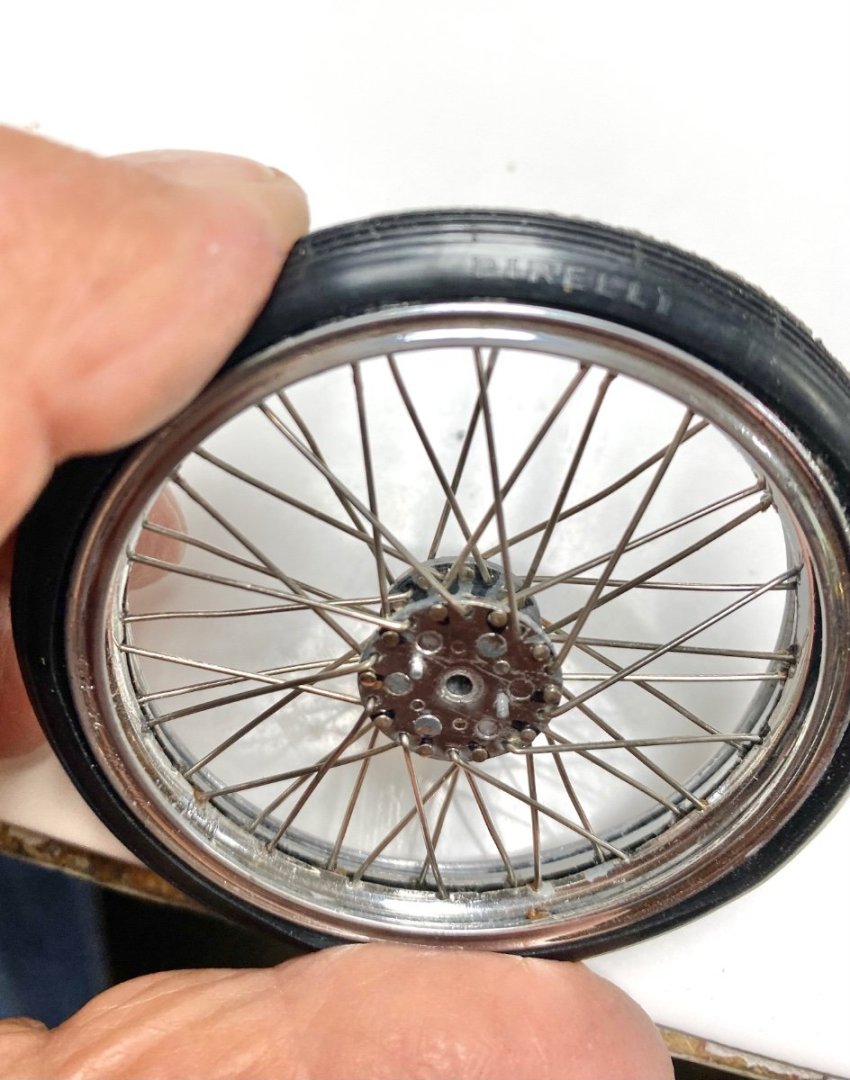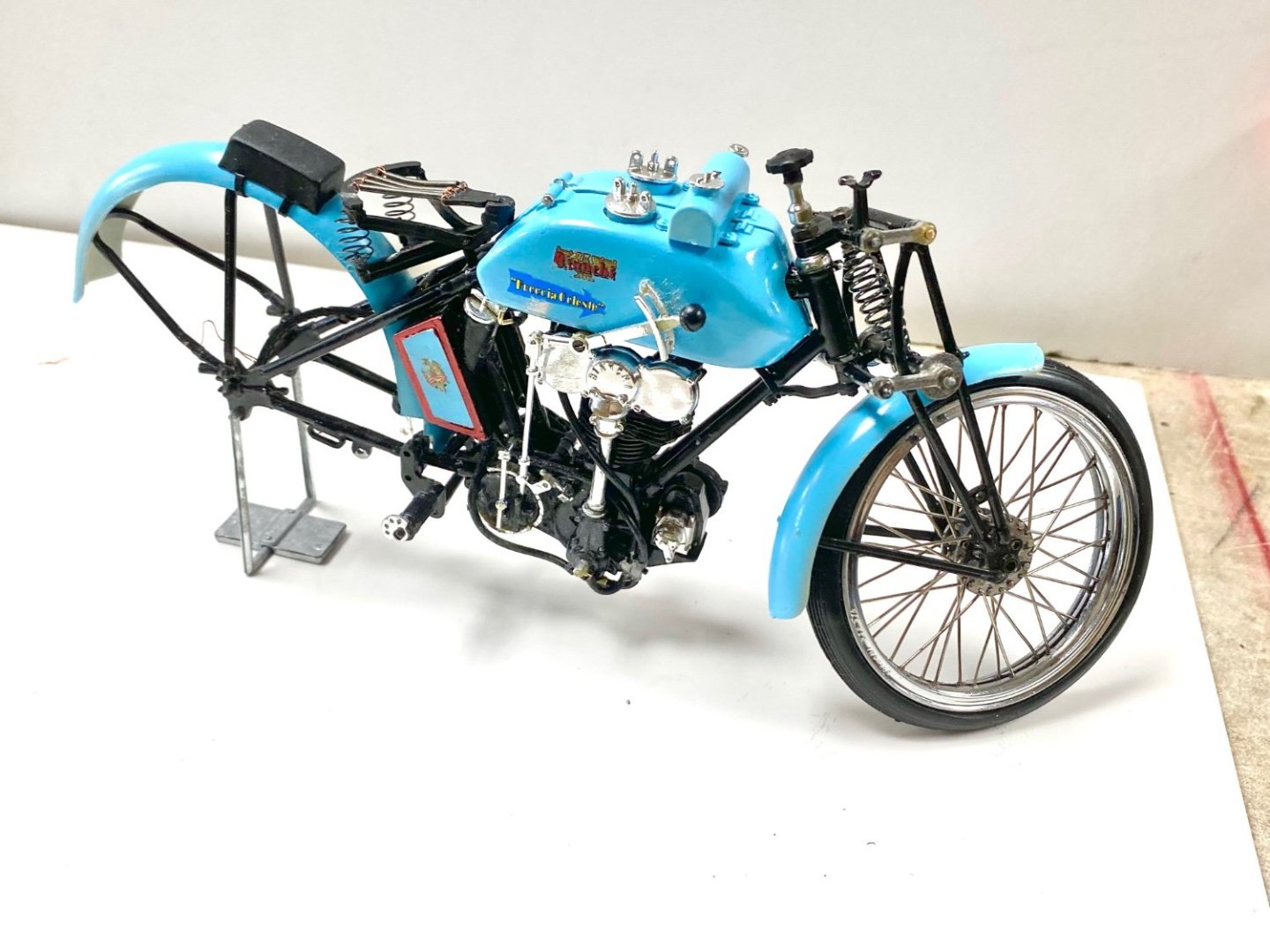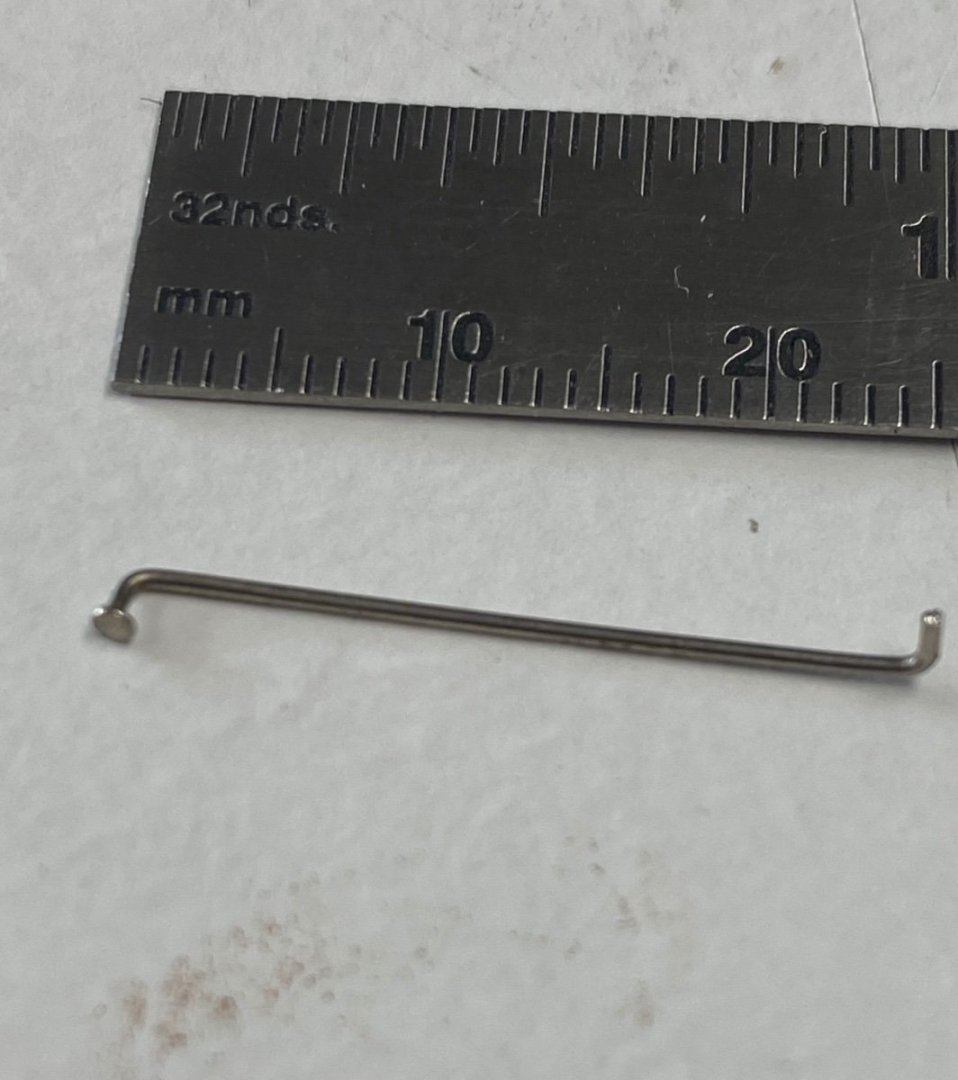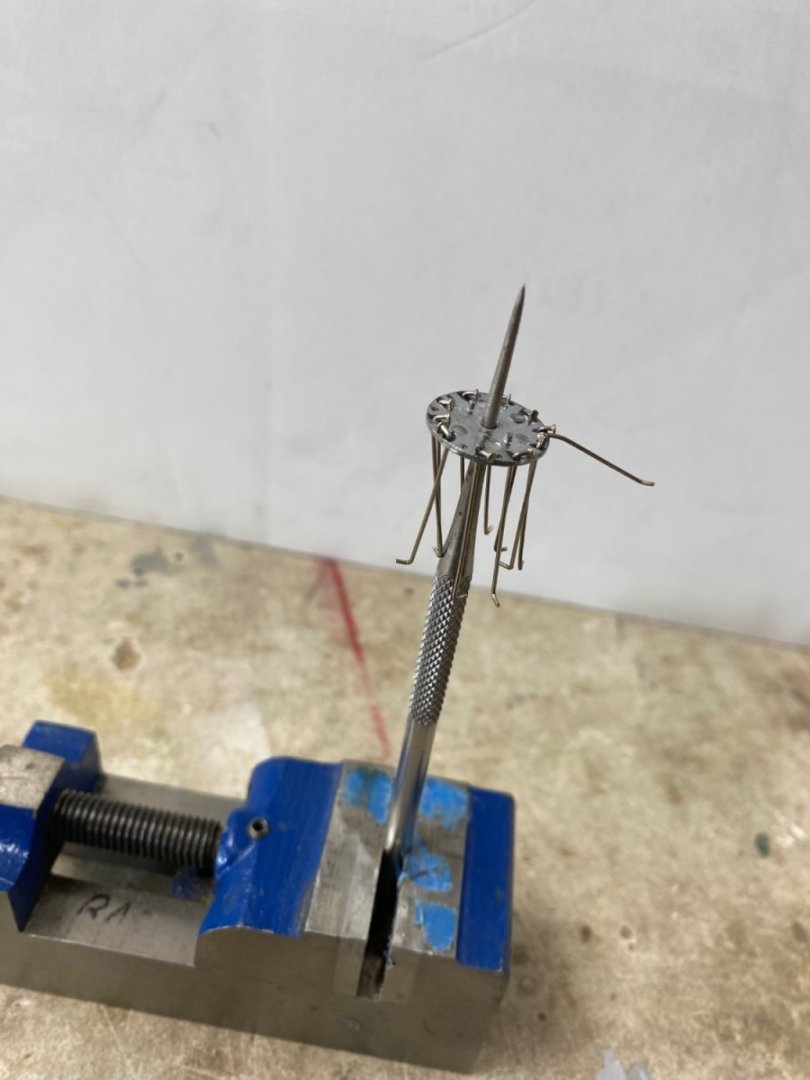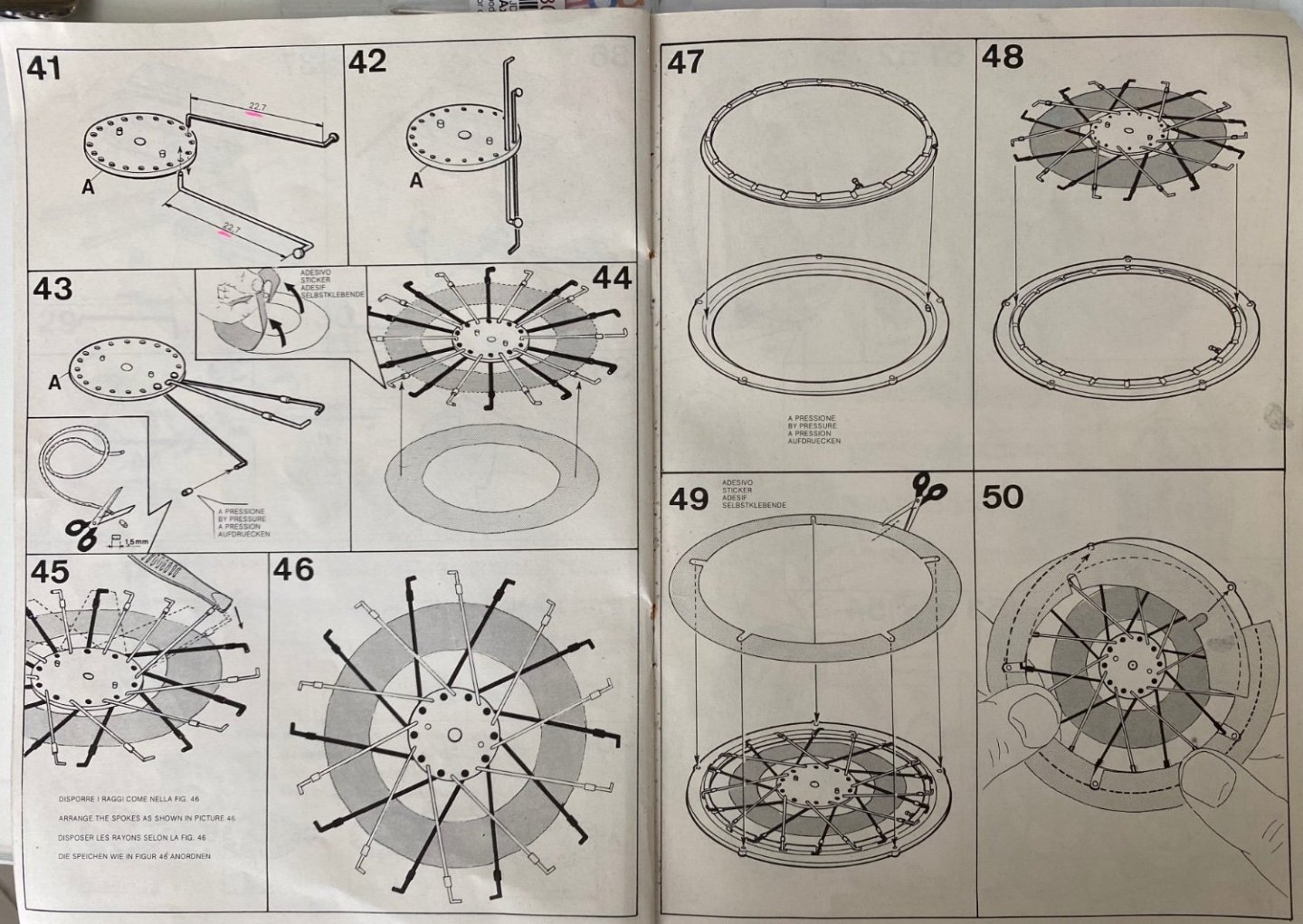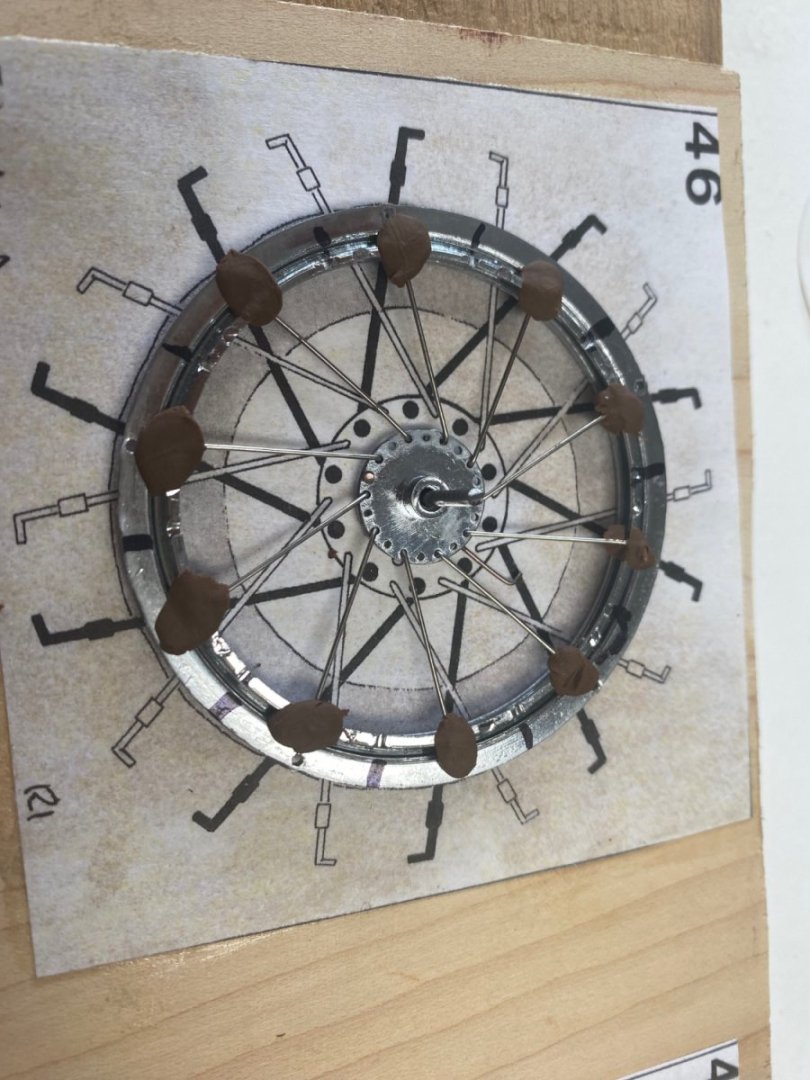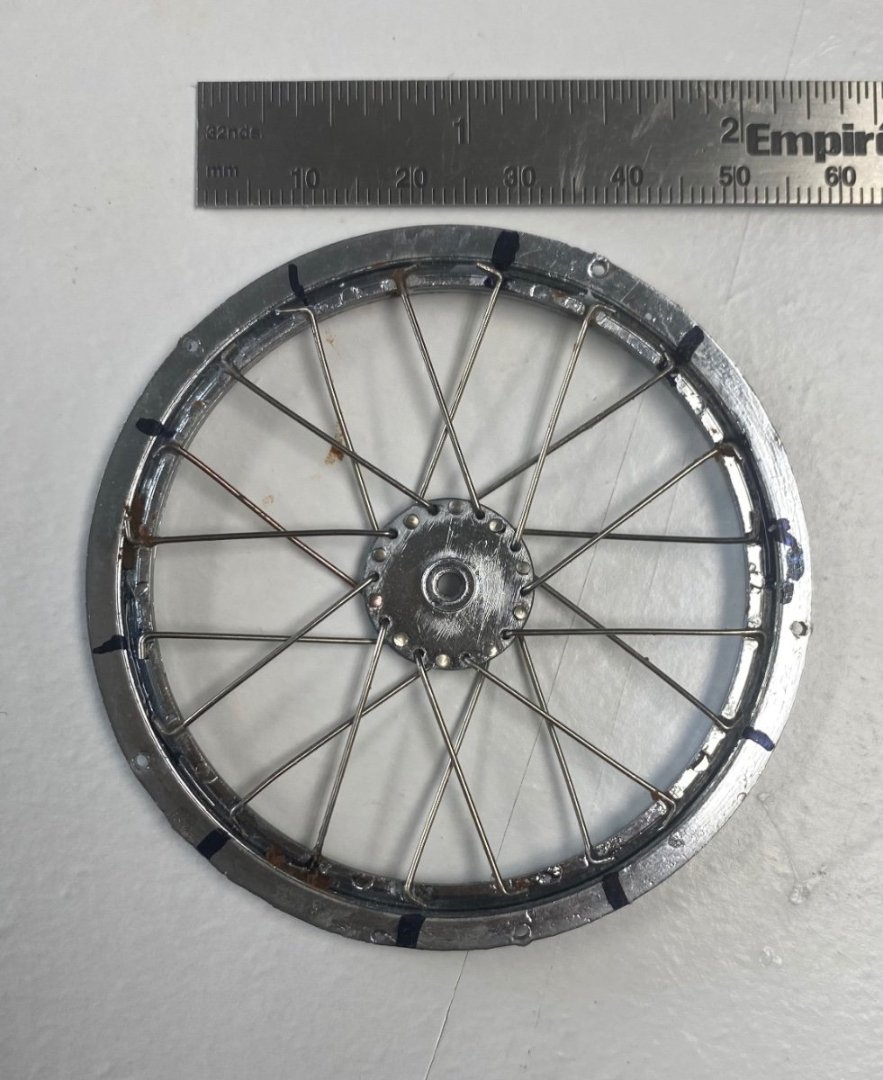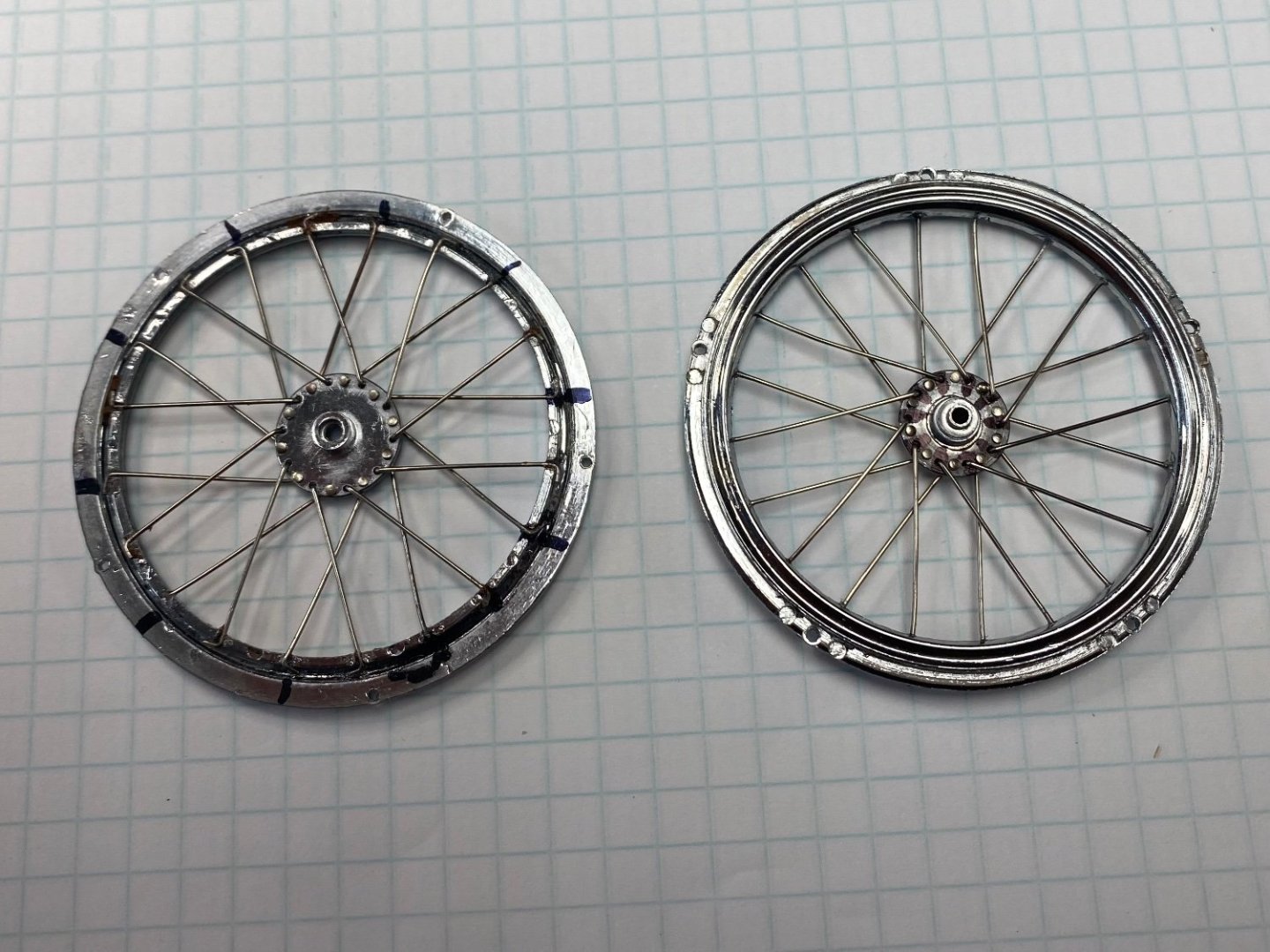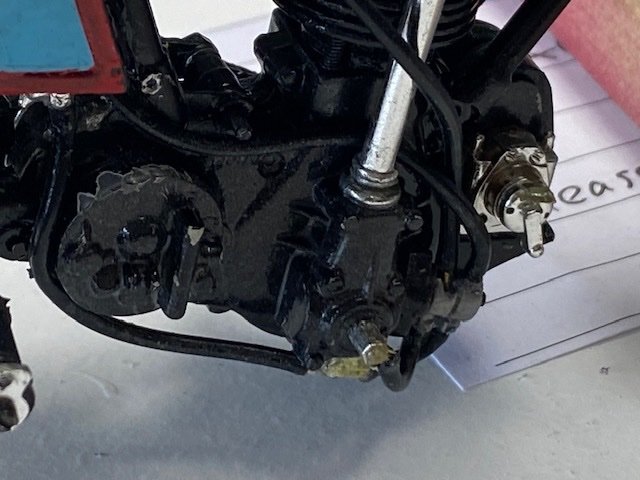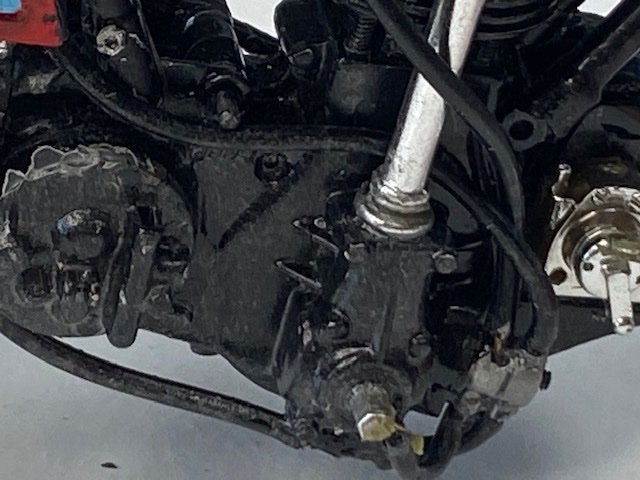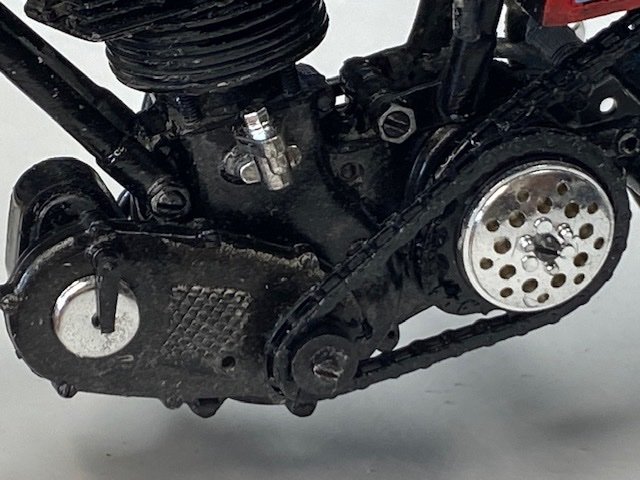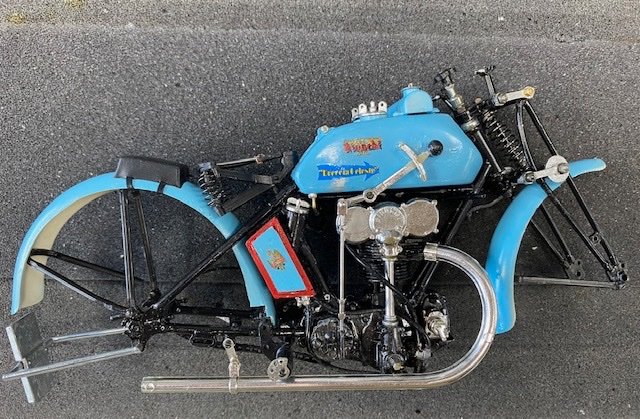-
Posts
593 -
Joined
-
Last visited
Content Type
Profiles
Forums
Gallery
Events
Everything posted by Ras Ambrioso
-
A few years back a friend gave me this kit of a B17F bomber. He was building a B36 in 1/72 scale and wanted a B17 to compare sizes. At the time I was busy scratch building ship models and just put the kit away in the shop shelves Then, after the disastrous accident I had with my “Freccia Celeste” motorcycle project, I needed to cool off. I decided to build this model as a "proof of concept" of a way to display airplane models in the walls rather than in shelves or hanging from the ceiling. My idea came of my collection of small booklets called “Aircraft Profiles” that presented the aircraft with profiles indicating painting and markings.The plastic models are offered in “flat” trees that resemble a Bas-Relief so I figured that I could lay the different parts of the aircraft in a “Shadow Box” display. During my online searches I found that I was not the only one with these ideas as several guys have done a similar job. So, I went to Michael’s and purchased a nice shadow box. The back was painted to resemble a cloudy sky and I tested the arrangement using the kit’s parts. I intended to super detail the inside of the Fortress and to purchase etched parts to complement the kits details. Following are photos of the build in progress I ordered the Edwards PE rear cabin details but, when I saw the size of the parts in the PE frets, I figured that 1/72 scale was way beyond my tolerance and decided to use the parts in the kit and some of the PEs to detail only the cockpit and the bombardier/navigator station in the nose of the aircraft. The fire extinguisher was scratch built. And this is the project as it stands today. I need to go back and retouch some of the outlines but, other than that, I am pleased with the results. Be gentle with the magnifiers as I am not a very good painter. But, from the middle of room looking at the wall it will be fine. Tomorrow, I expect to mount it on the canvas and set it in the shadow box. It is going to go on exhibit at the Art Show our building is having next week. This is where we, old "f**ts, show our playthings. Now a note for modelers: While building this kit I used Vallejo paints and found they are difficult to shake by hand. So, I came in with a new tool: “The Ras’ Shaker” using a large prescription container. I originally made this for rounding up wood ship's blocks when sandpaper is placed on the inside circumference .Works like a charm. Thanks for following.
-
Sorry I couldn’t be of more help to you on the African Queen model. I built mine many years ago before I joined this forum. I remember it was a fairly easy build until I tried to run it on steam. The little oscillating steam engine wouldn’t move the boat at all. So the I cheated by disconnecting the steam engine and adding an electric motor. The boat then ran perfectly. I could fire the boiler and get the steam going while the electric motor did the work. Very satisfying experience..Good luck on your build.
- 46 replies
-
- live steam
- radio
-
(and 2 more)
Tagged with:
-

Sternwheeler "Zulu"
Ras Ambrioso replied to Kishmul's topic in CAD and 3D Modelling/Drafting Plans with Software
I just ordered the plans for Zulu from Sarik Hobbies and will be using your 3D drawings to scratch build the model. There is not much information online for this boat. I will start the build log as soon as I get the plans fro the UK. Great job bringing all these details to live. -
Great job. The only thing missing are the flowers. Maybe you could get some miniature flowers. You may try the net for places that sell material for doll houses. Here, in the USA, we have Hobby Lobby and Michael's that carry such stuff. Pero, en todo caso tu trajinera es bella.
-
By the way Jacques, are you also a diver? I used to dive in Cuba with the aqualung just after Jacques Cousteau wrote his famous "The Silent World".
-
Jacques, I am enjoying reading about your journey through you first scratch built. Your story telling is great and told me about a few things I didn't know. I have have been in Mexico City in many occasions and had the pleasure of enjoying the rides at Xochimilco. The one thing that was notable in the "trajineras" at the park was how colorful they were. Flowers all over and brilliant colors. I will be following your build. Que viva Mexico
-

Messerschmitt Bf-110 by Javlin - Revell/Dragon - 1/32
Ras Ambrioso replied to Javlin's topic in Non-ship/categorised builds
Great emoji -
Well I finally cooled down from my disappointment at crashing my, almost complete, model. I used this time to embark in another project which I will be logging soon. As I have shown before, the breakage included the connecting pieces between the frame and the front fork. Rebuilding these parts seemed an easy job and I decided to use some styrene strip that I had left from the Mimi project. I needed 4 pieces that had to be exactly equal since they formed the parallelogram that allows the movement of the front fork with respect to the frame. In order to make four similar pieces I decided to glue four strips and work the drilling and shaping in unison. I would use Elmers glue and, when the fabrication was completed, I would de-glue the strips with alcohol. Great idea, Ras. This was the test of the process. Then I dipped the bunch in the de-gluing liquid. The next day I removed the bunch from the liquid and ...... Horror again. I had a melting goo instead of four nice separate strips. A little investigation resulted in finding that I had used acetone instead of alcohol. Another senior moment. Then I reconsidered the problem and decided that metal would be a better material for this stress are in the bike. Using the the same idea of fabrication in unison I could use superglue to bind them during the drilling and shaping and then use the acetone to separate the pieces. Great! I measured the connector and cut four pieces of brass strip 6X2 mm. As planed, I glued with CA and let them in the vise overnight. Then with a file I brought the bundle to size marked the holes and starting the drilling of the two holes. Now, guess what........ Horror again. The heat of the drill unglued the strips and ruined the job. I then started again with a new set of strips and this time I clamped them together during the drilling. And yes, finally, success: Now I will shape them using my hand tools. The saga continues, next comes the handlebar and the bottle of champagne.
-
While I was working on the finishing details of the motorcycle I was using a block of foam that I bought from Micro-Mark. This block was used to hold the ship's hulls while working on the superstructure. I found that I could lay the motorcycle on the top of the block setting the foot holds in the crack. The arrangement worked perfectly. Now I am ready to install the completed handlebar (See Post #28) and attach the control cables to the ignition, shift and brakes. So I figure in using the same block to stand up the bike. Here is the bike in the block: Here is the end view. The block is precut to use on three different size hull beams. Very useful tool. Then disaster struck. While changing the bike's position for the photos, I dropped the bike and the "Bianchi Curse" struck again. I have tried to build this bike since the 90's when I built the spoke wheels and found the kit quite difficult; so, I abandoned the build and put the kit away. Then,in 2017, we downsized and I got rid of most of my tools and kits. In 2021 I found the same kit available online and proceeded to purchase it at quite a high price. I decided to start in another place other that the wheels. At that time, I assembled the frame and painted all of the body parts in the sky blue color. Then, when I joined this forum and started building ship models, I put the kit away . The kit sat in a shelf in my closet. This year(2023), while searching the forum, I found the "other than ships" section and my interest in the Bianchi was reborn. And now the "curse" hits. It seems that I am not supposed to finish this project. But, if Valeriy can work his magic in his hometown situation, I can rebuild the broken front end too. As you see on the last photo the front fork broke at the suspension parallelogram. I will use brass to rebuild the four connecting bars. I am going to take a couple of weeks to cool off working on another kit model (a B17F bomber in 1/72 scale). See you soon
-
Nothing better that hear from experts. When I was assembling the two halves of the spoked rims I looked for any markings that would have been included tor the correct assembly. I didn't see any, so I proceeded to eyeballing the setup. If I was making this model for sale or museums, I would unmount the wheels, unscrew the rims (5 mini screws) and rotate the rim one hole. But, I am going to let this go as is. If you look closely at the overall assembly you will find a bunch of "oops". Building this model has been frustrating, tedious and incredible difficult considering my shaking fingers, bad sight and lack of five hands. But I have loved every minute of it and enjoyed sharing my experiences with the forum.
-
Amazing work. I smile when I think of your tolerance of 0.008 mm when mine is about 0.500mm. Its a real pleasure to look at your work.
-
Finally, after three days of work, (a total of 10 hrs, really), the first wheel is done. To set the tire in the rim I had to recall my experiences as a teenager removing car tires off their rims to fix the flats. Working part time in a garage, the only tool available was a steel bar and a hammer. Here I had to use very small screw driver to open up the tire an let it slip on the edge of the rim. As everything else in this build, a very frustrating experience. But I loved every minute of it. After a wait of over 30 years I, finally get to see this kit nearing its completion. Notice the detail on the tire itself: Pirelli. And this is how the Bianchi looks now.
-
Well, the day came that I had to start assembling the spoke wheels. I have dreaded this moment since I had failed before in my attempts to build this kit back in the 90's. At that time, I started with the wheels and got totally frustrated and abandoned the project. Now, that I am older, I think that have gained some patience and perseverance to deal with failures. I purchased this kit used. It seems that the previous owner had started the wheels and had fabricated the 80 spokes necessary and then quit. So, for the start, I checked the spokes he (or she?) had cut and bend. Horror 🤪, The spokes were bent wrong. So, the first job was to verify the size (two different lengths were required) and the bends. Each wheel has two rims and two hubs to which these spokes are to be inserted. That done, I proceeded, as per the instructions, to thread the spokes into the hubs. This was a little complicated as the spokes are feed alternately on the hub holes: half up and half down. Then another crisis developed. The instructions indicated that the spokes would be lined up as per the diagram and then placed on the corresponding slots in the rims (#47 and #48 below). A tape, with adhesive in one side, was provided to spread and hold the spokes (see #44 and #46 above), but the pattern in #46 is not to scale and therefore useless. I scratched my head several times and decided that I needed something to hold each spoke in its slot (unglued) while I located the others and placed them in the rim. The answer was using modeling clay to hold each spoke in place. Success🙂 And here are the results. And, to make it more interesting, I assembled the second half of the rim's hub backwards. I had to submerge the rim with the spokes in acetone to remove the CA glue. But there is a happy ending to the story. The challenge continues........
About us
Modelshipworld - Advancing Ship Modeling through Research
SSL Secured
Your security is important for us so this Website is SSL-Secured
NRG Mailing Address
Nautical Research Guild
237 South Lincoln Street
Westmont IL, 60559-1917
Model Ship World ® and the MSW logo are Registered Trademarks, and belong to the Nautical Research Guild (United States Patent and Trademark Office: No. 6,929,264 & No. 6,929,274, registered Dec. 20, 2022)
Helpful Links
About the NRG
If you enjoy building ship models that are historically accurate as well as beautiful, then The Nautical Research Guild (NRG) is just right for you.
The Guild is a non-profit educational organization whose mission is to “Advance Ship Modeling Through Research”. We provide support to our members in their efforts to raise the quality of their model ships.
The Nautical Research Guild has published our world-renowned quarterly magazine, The Nautical Research Journal, since 1955. The pages of the Journal are full of articles by accomplished ship modelers who show you how they create those exquisite details on their models, and by maritime historians who show you the correct details to build. The Journal is available in both print and digital editions. Go to the NRG web site (www.thenrg.org) to download a complimentary digital copy of the Journal. The NRG also publishes plan sets, books and compilations of back issues of the Journal and the former Ships in Scale and Model Ship Builder magazines.


